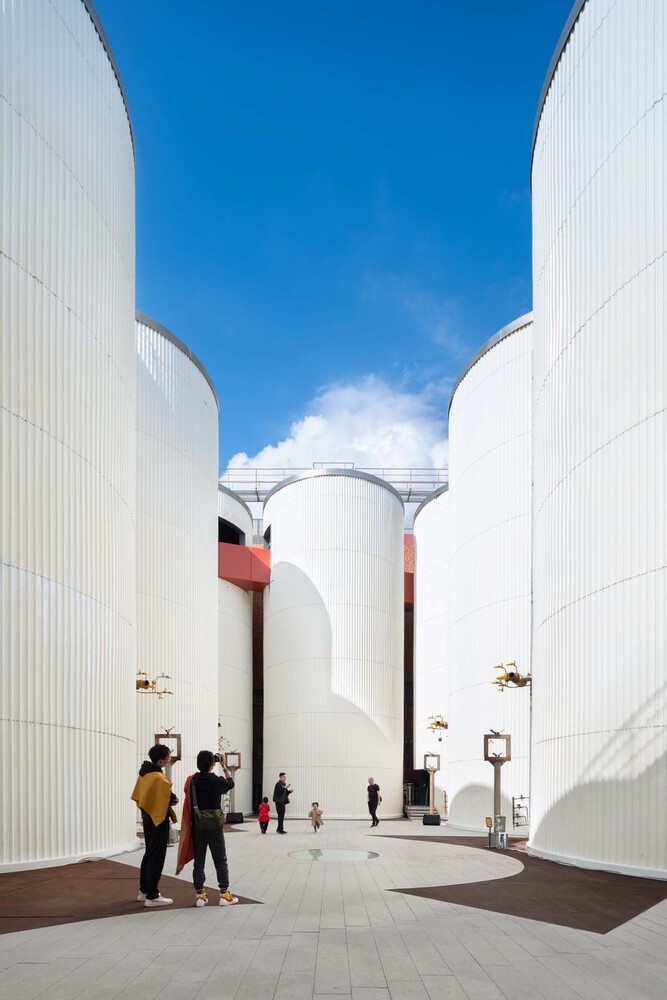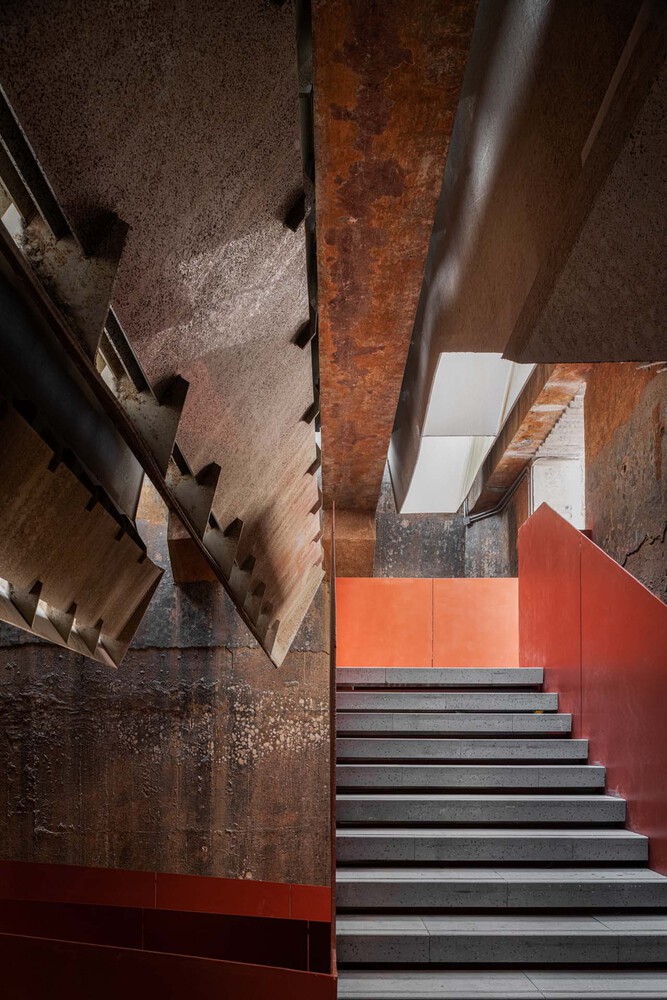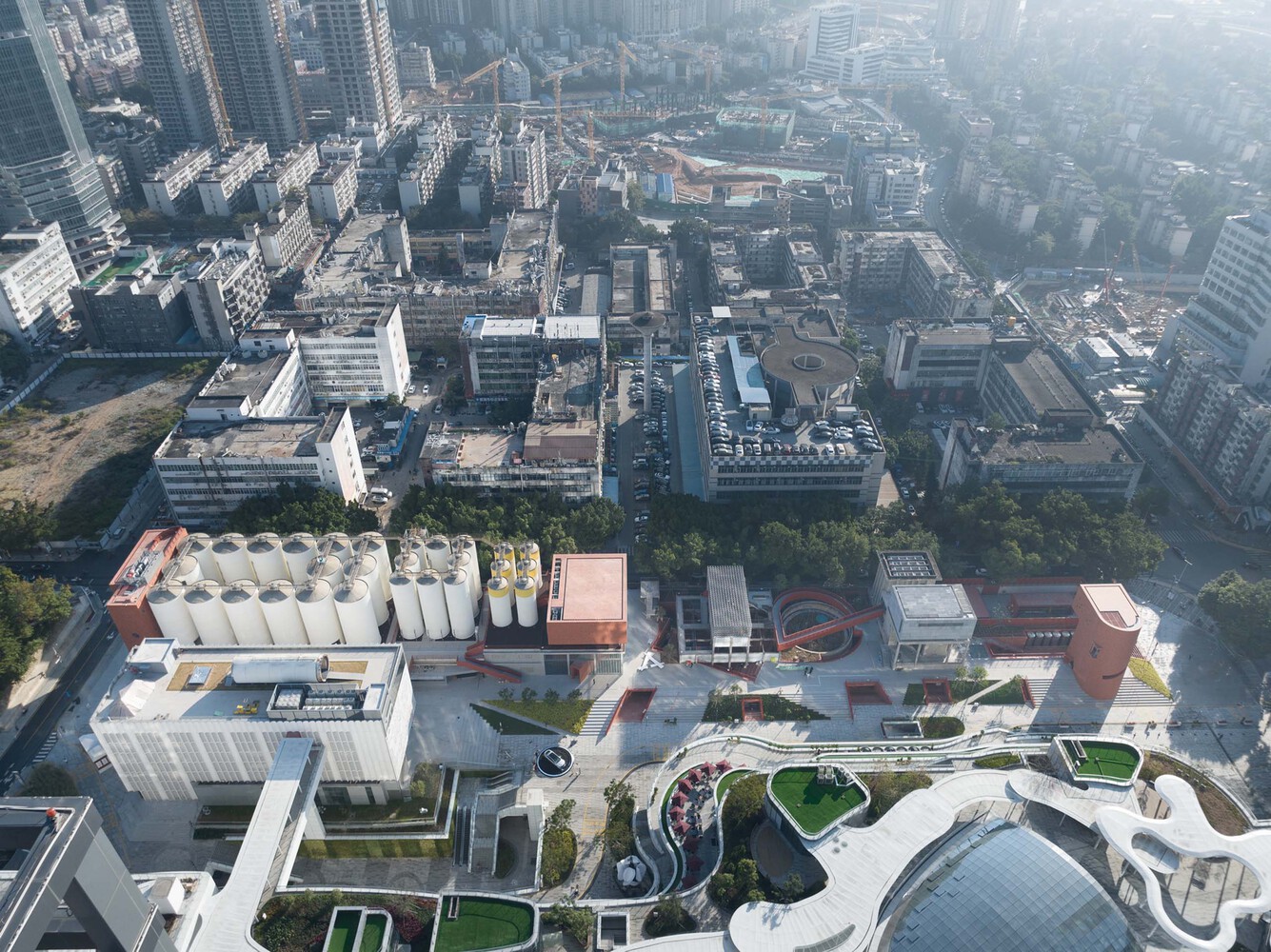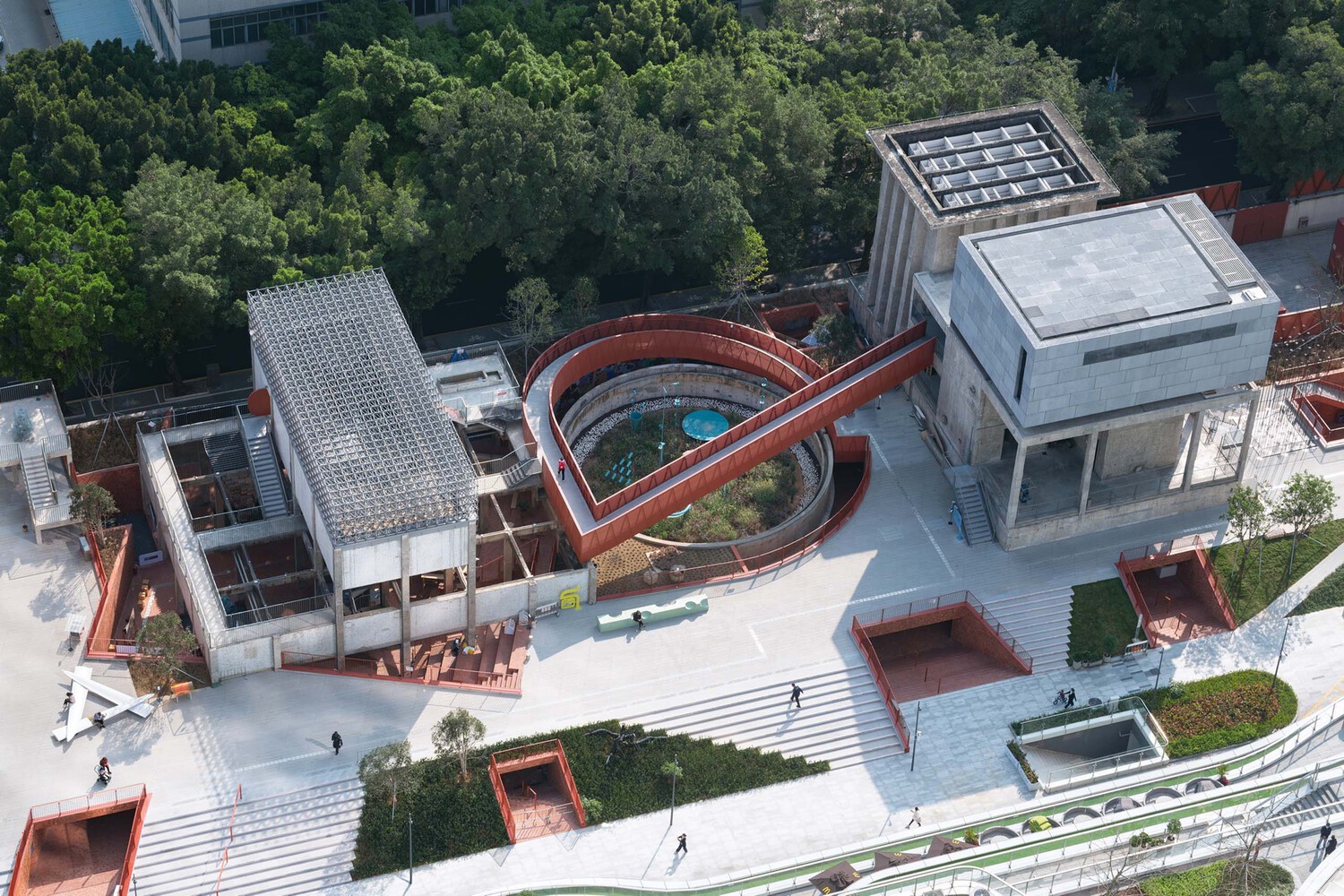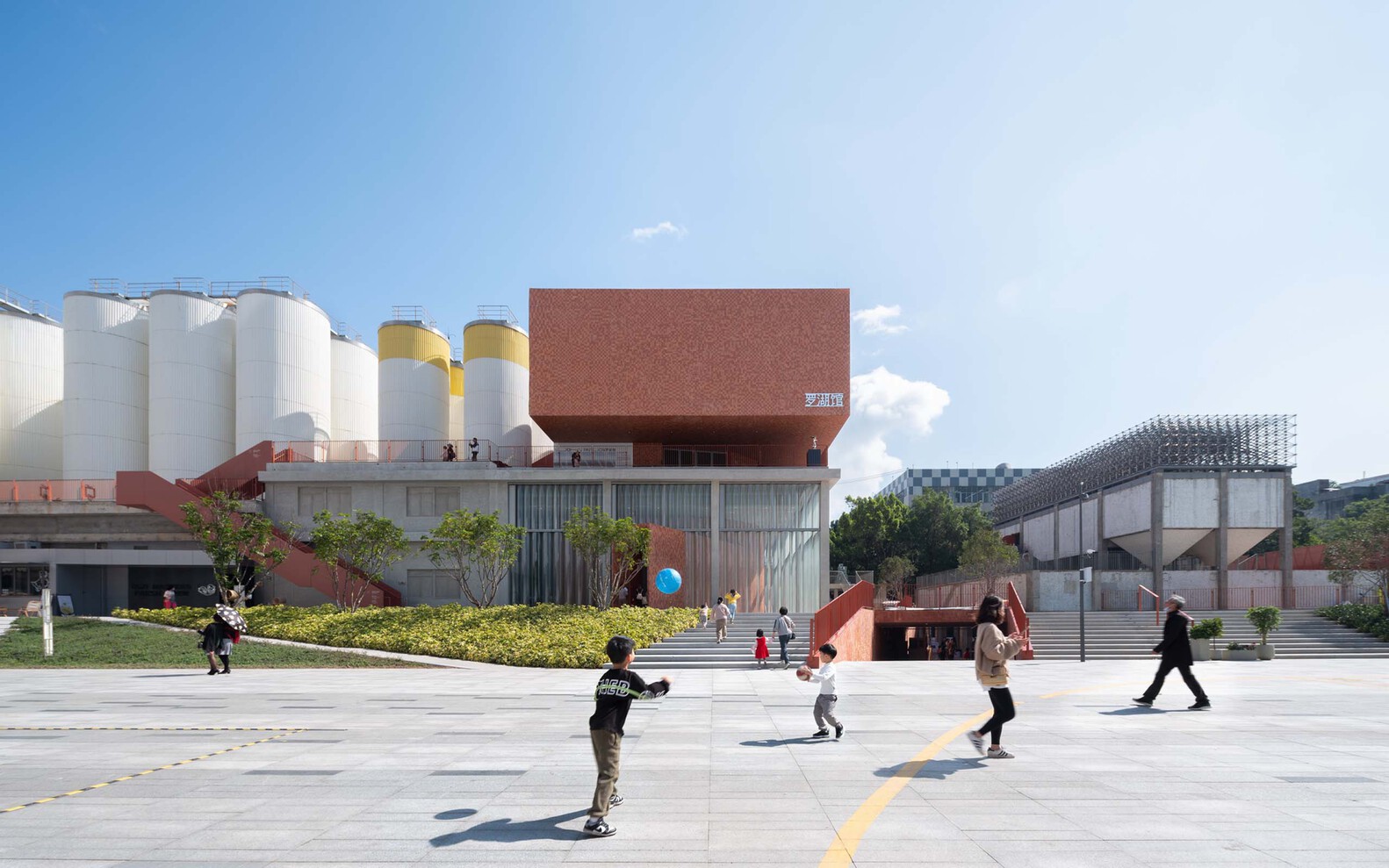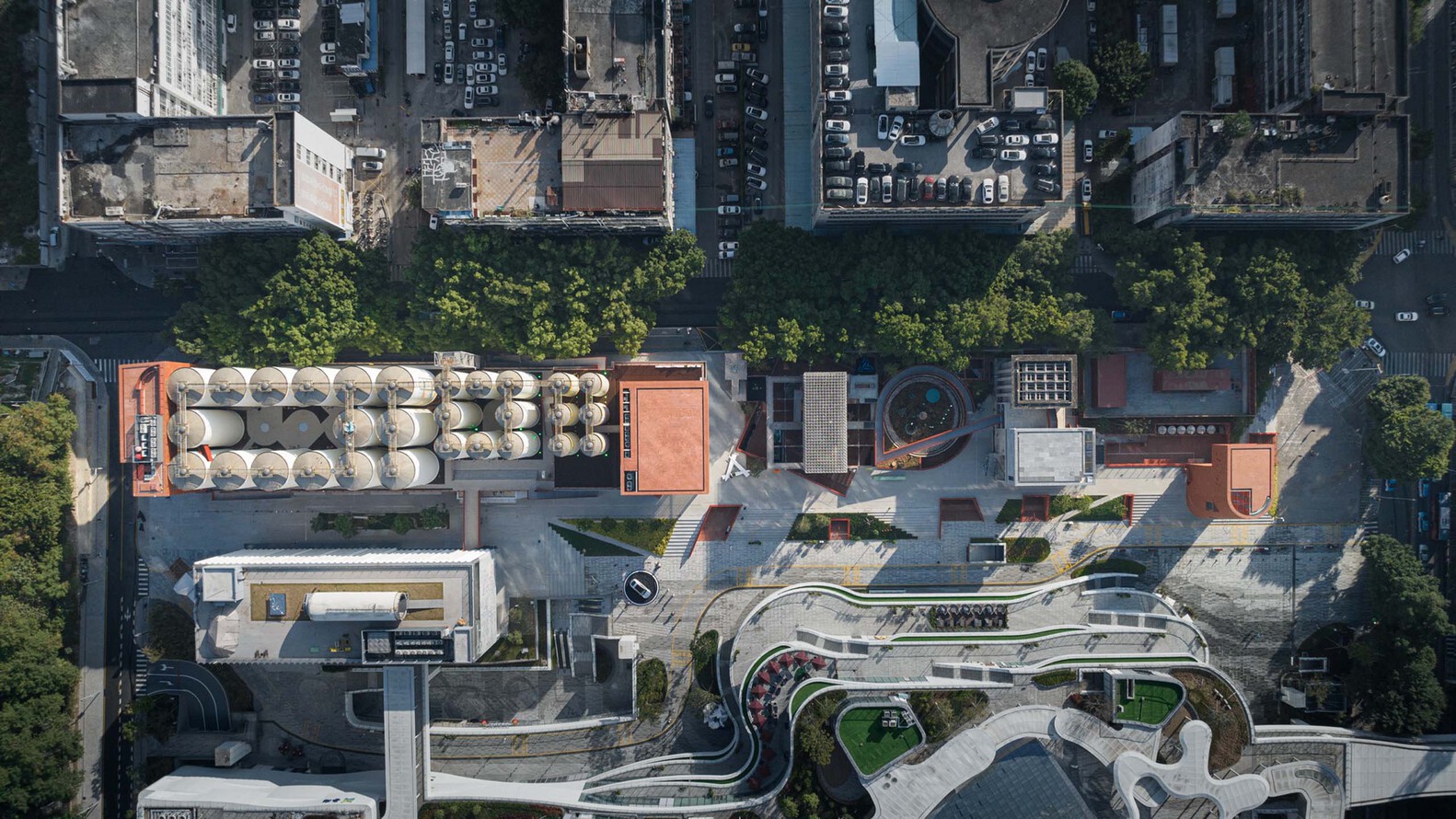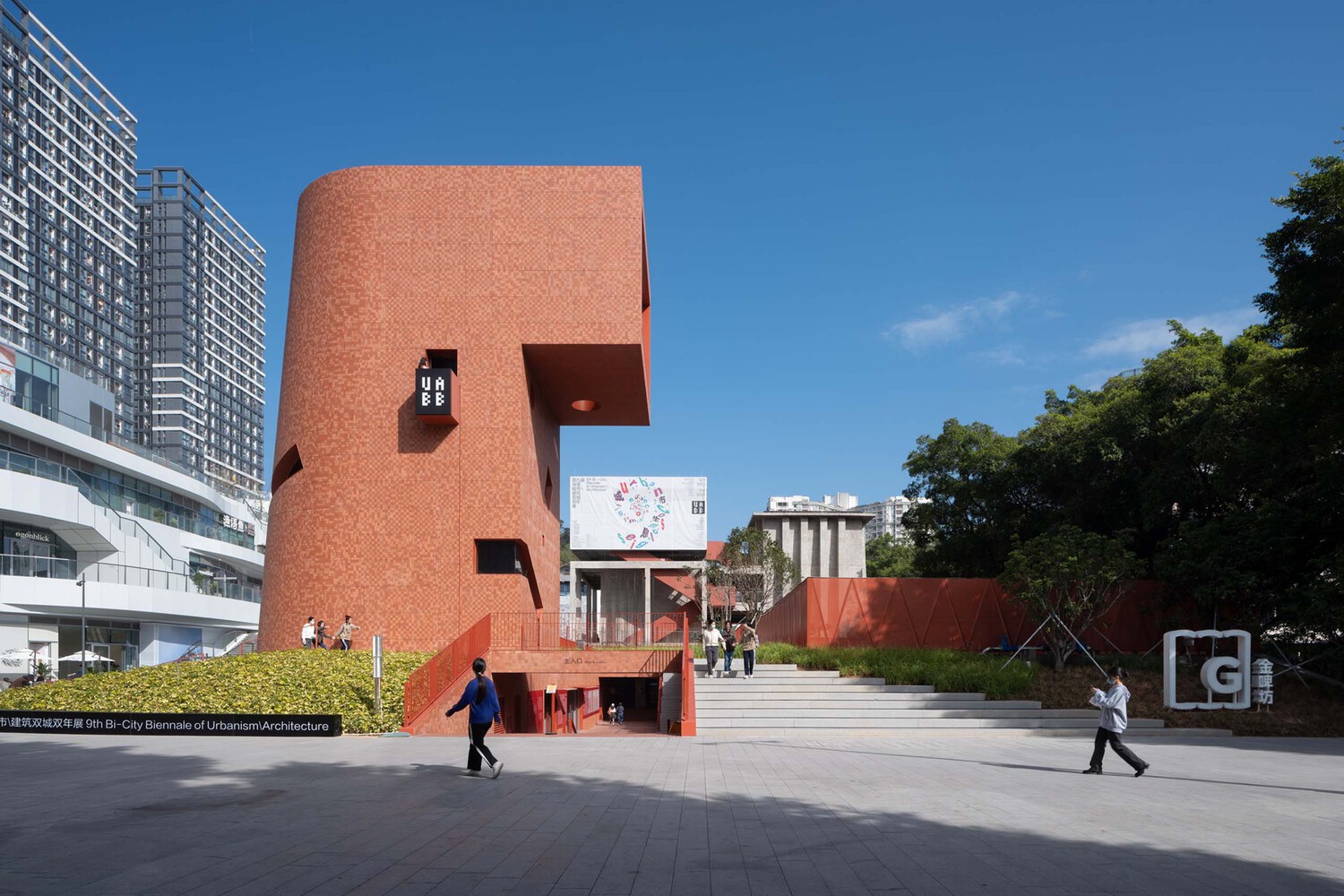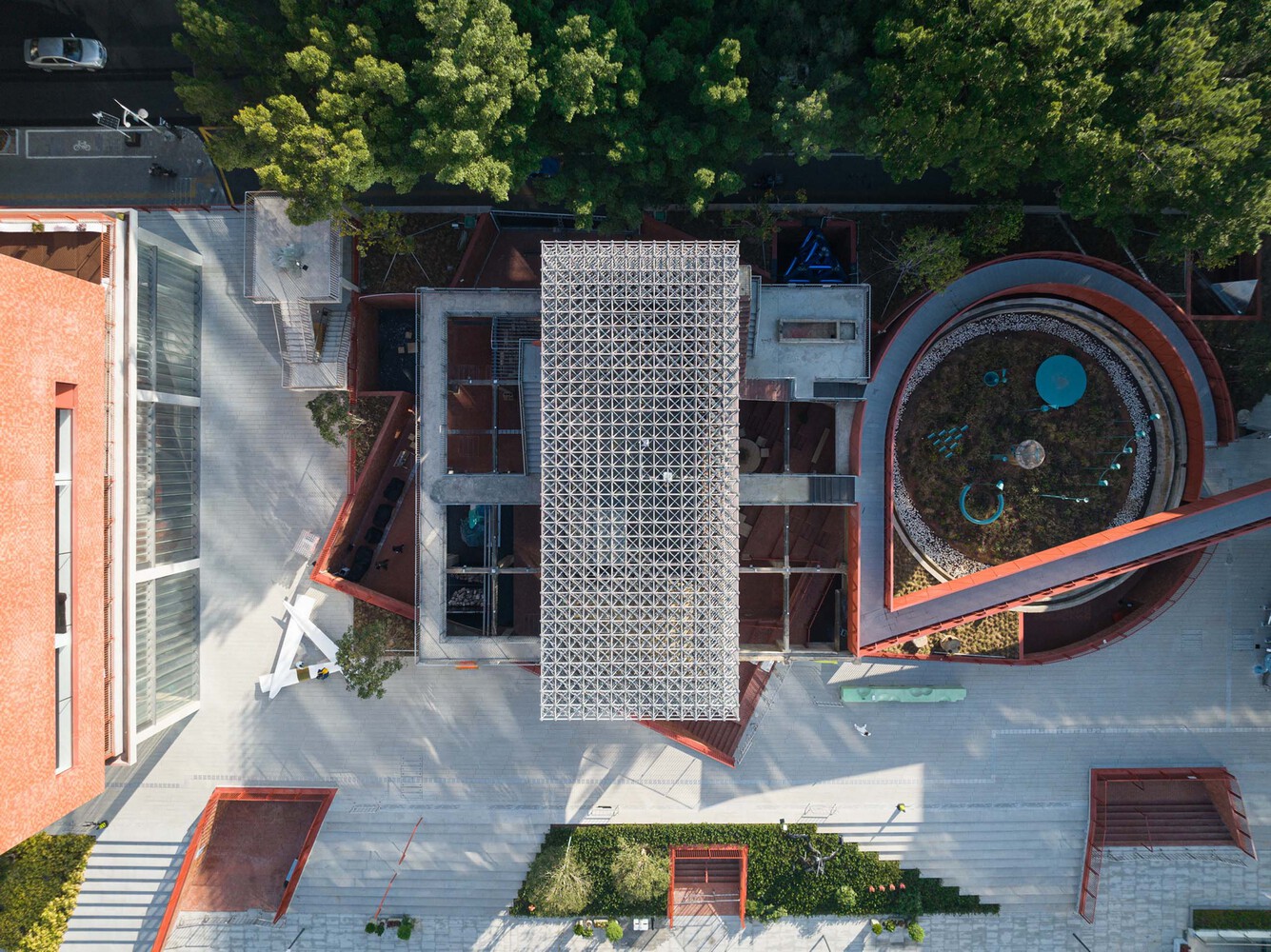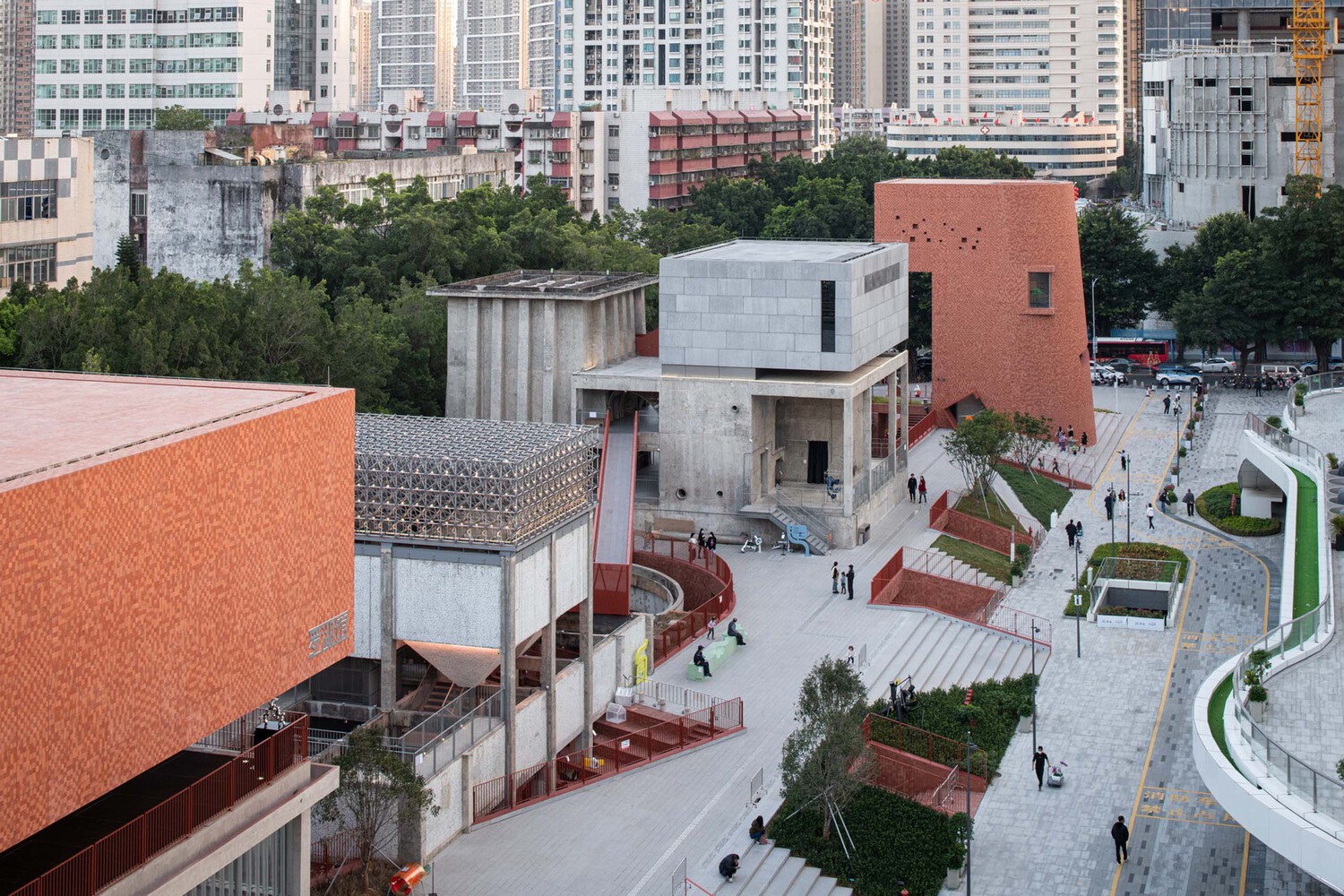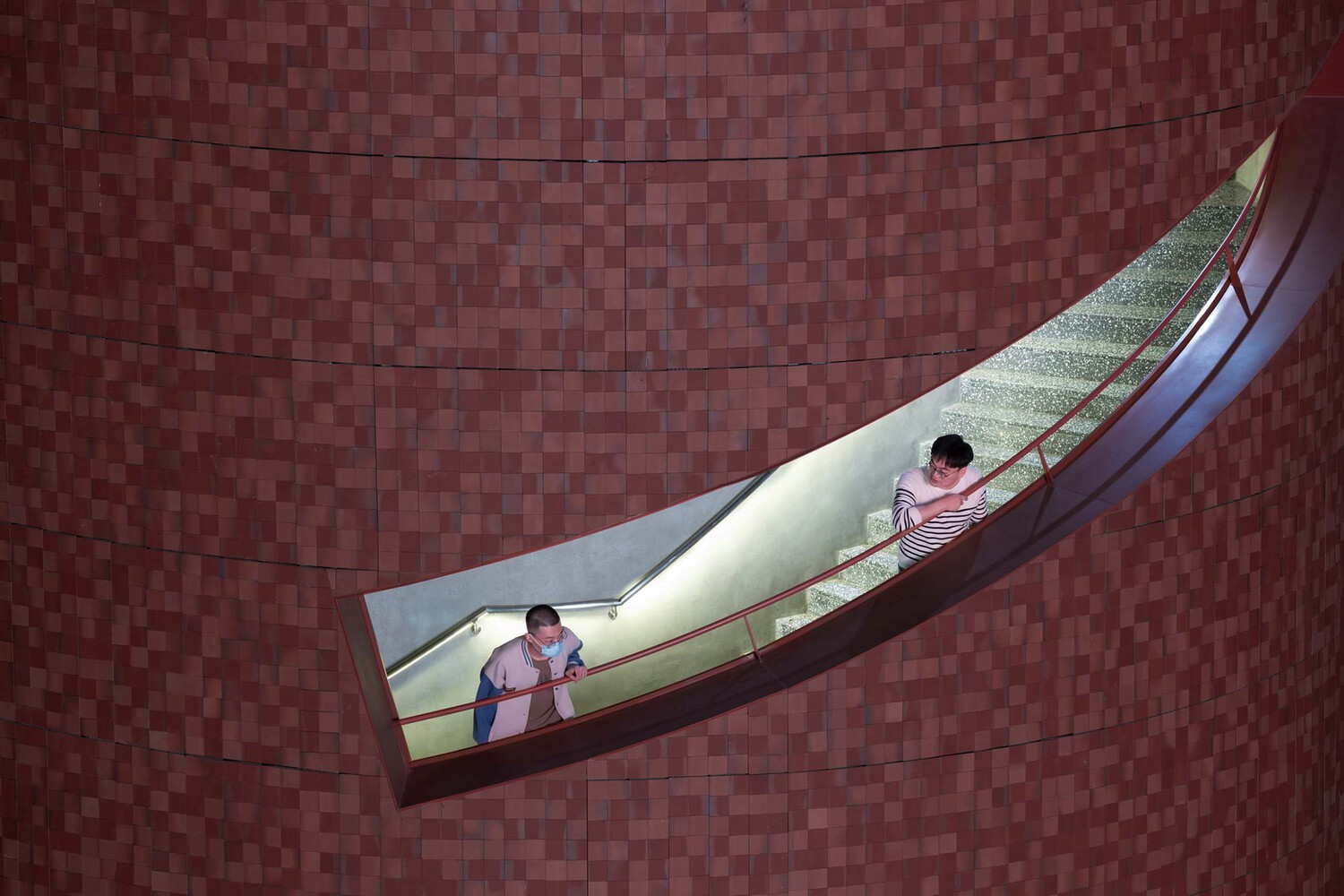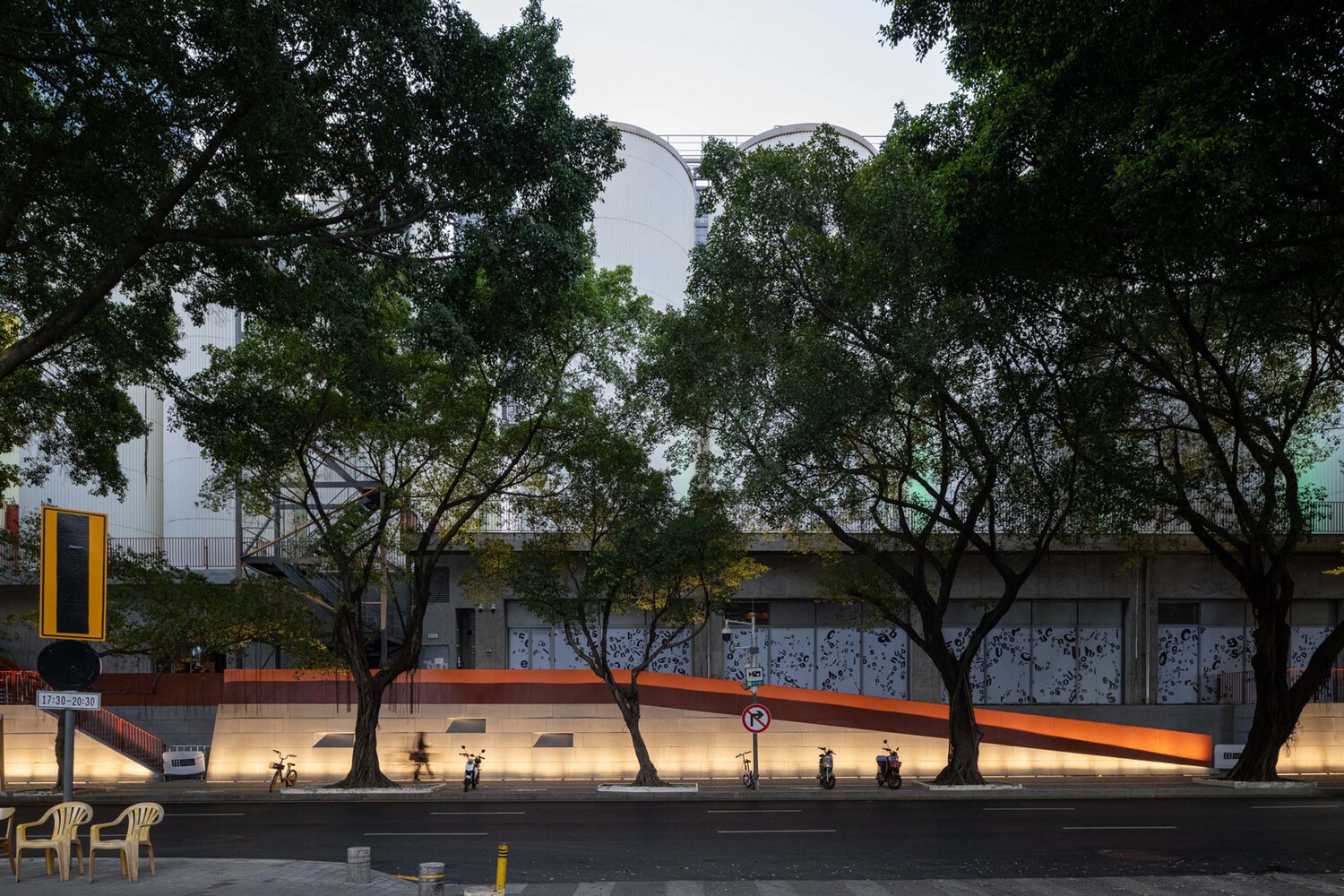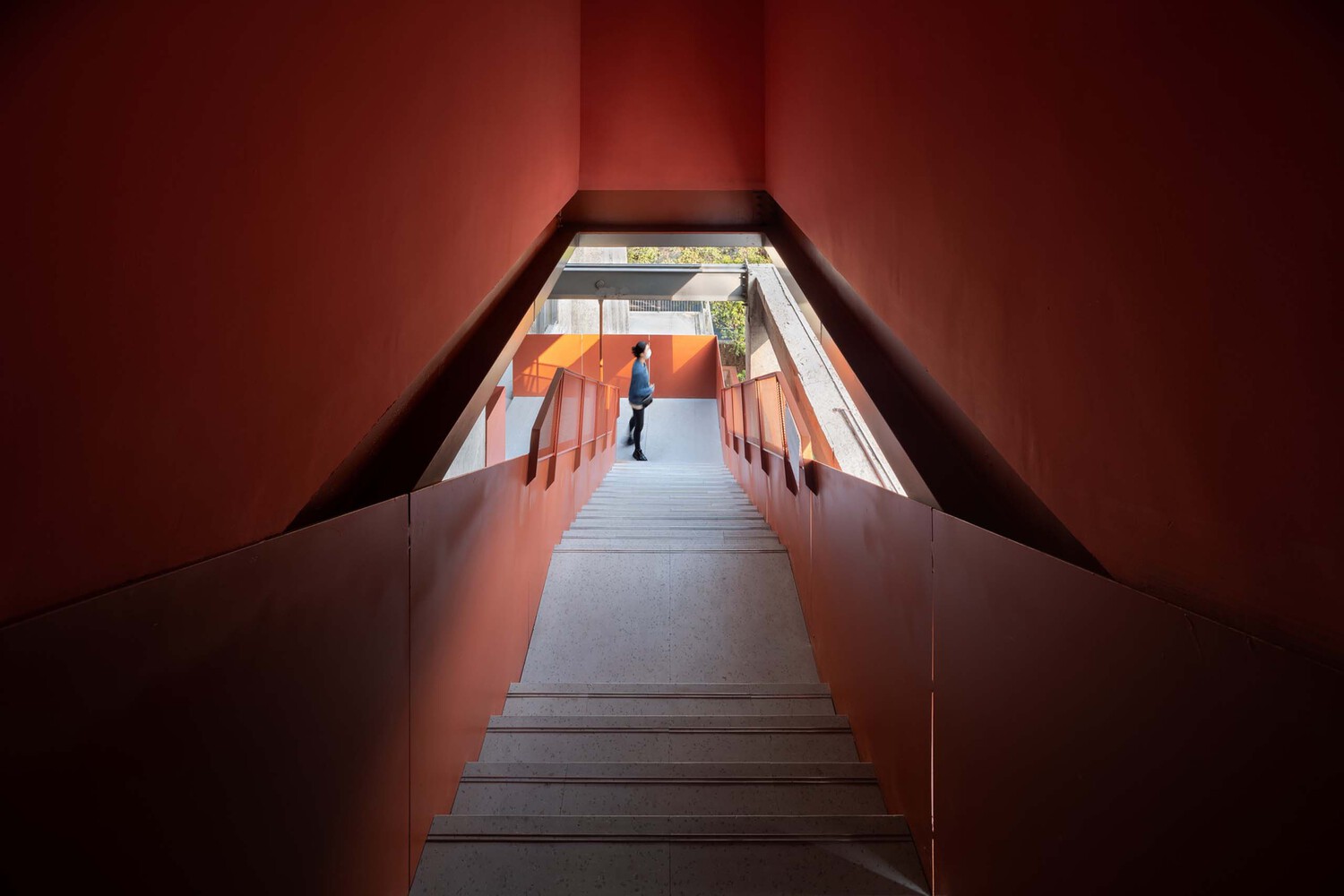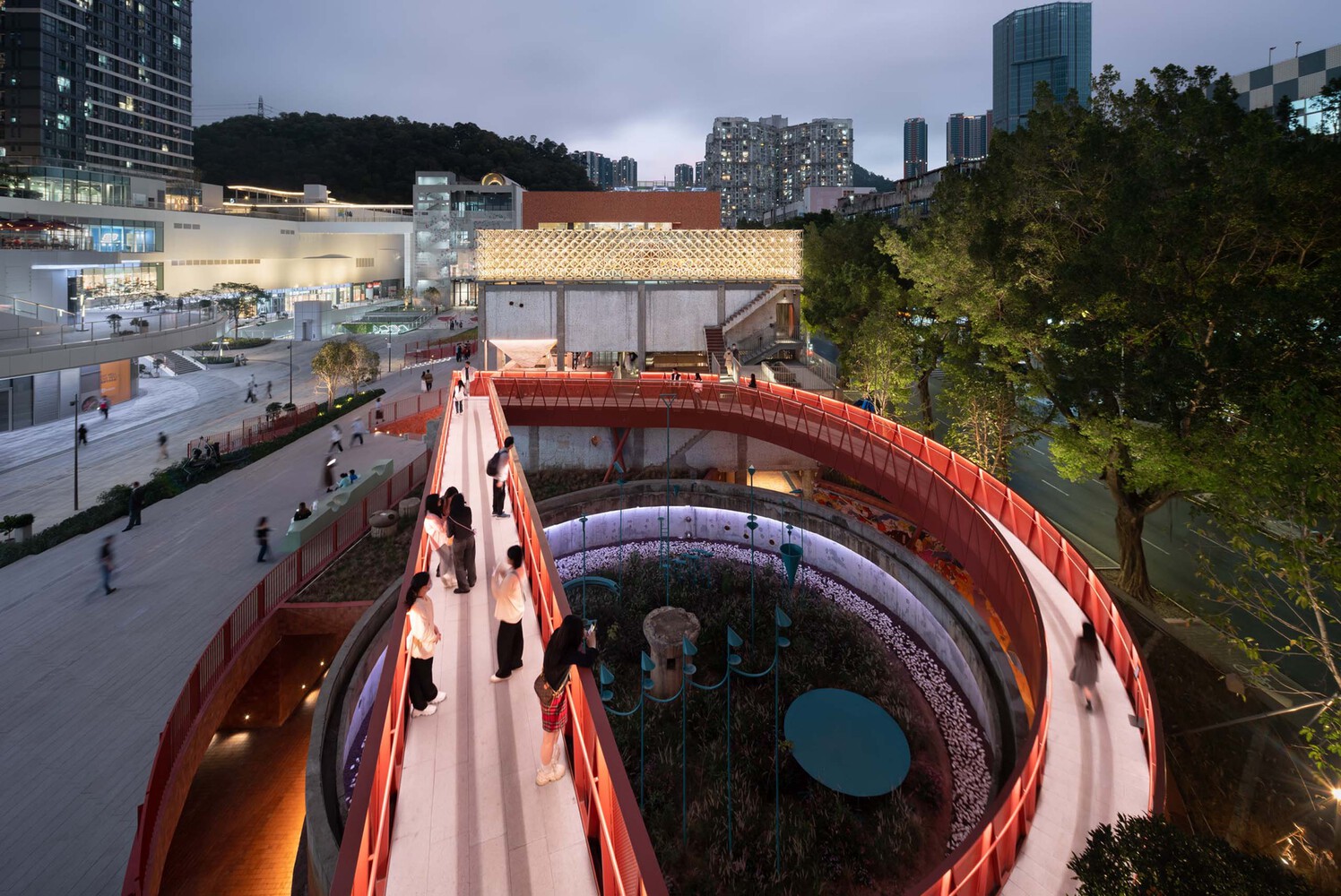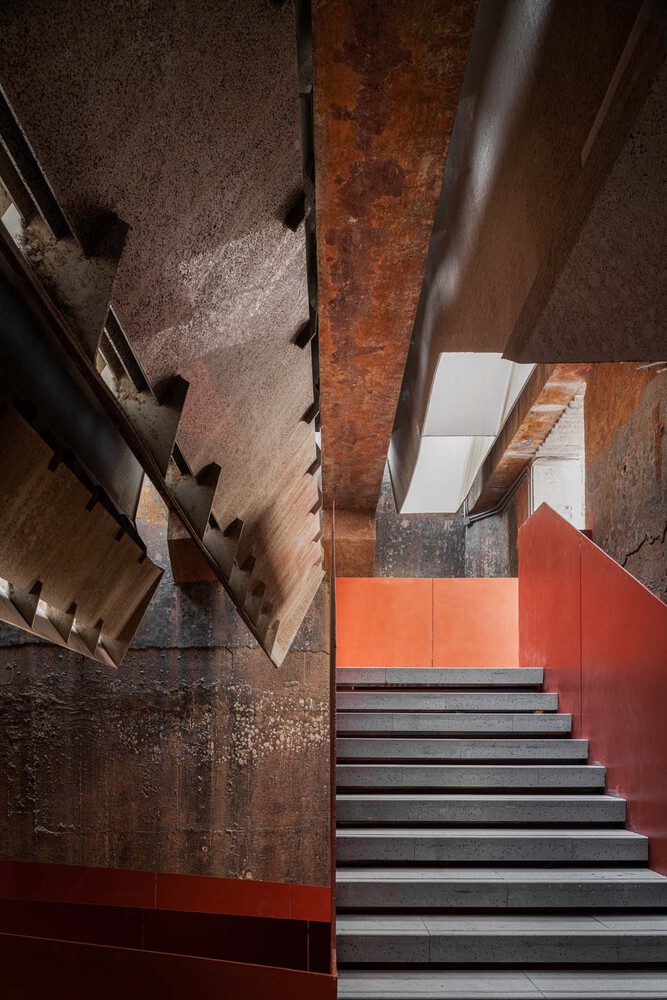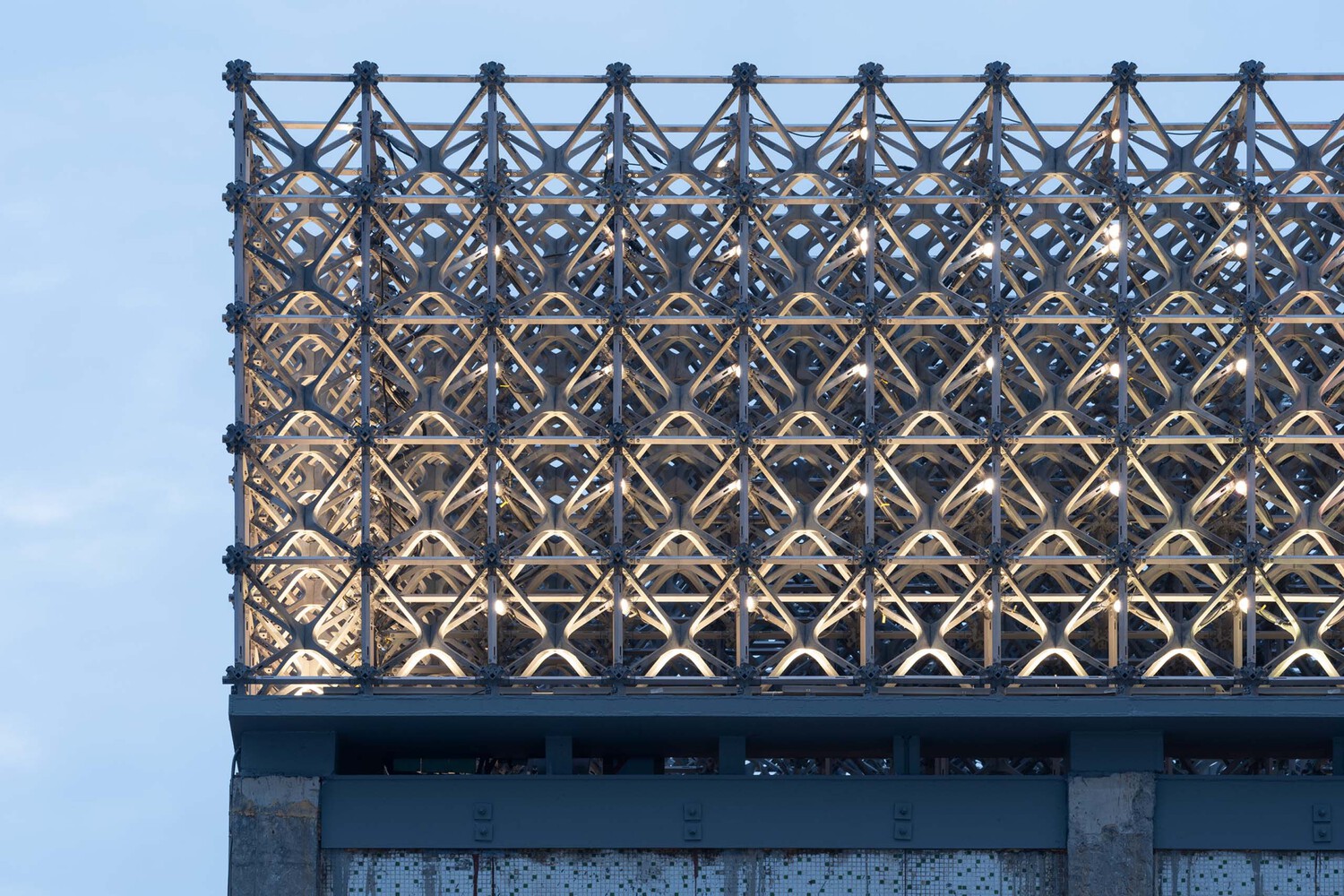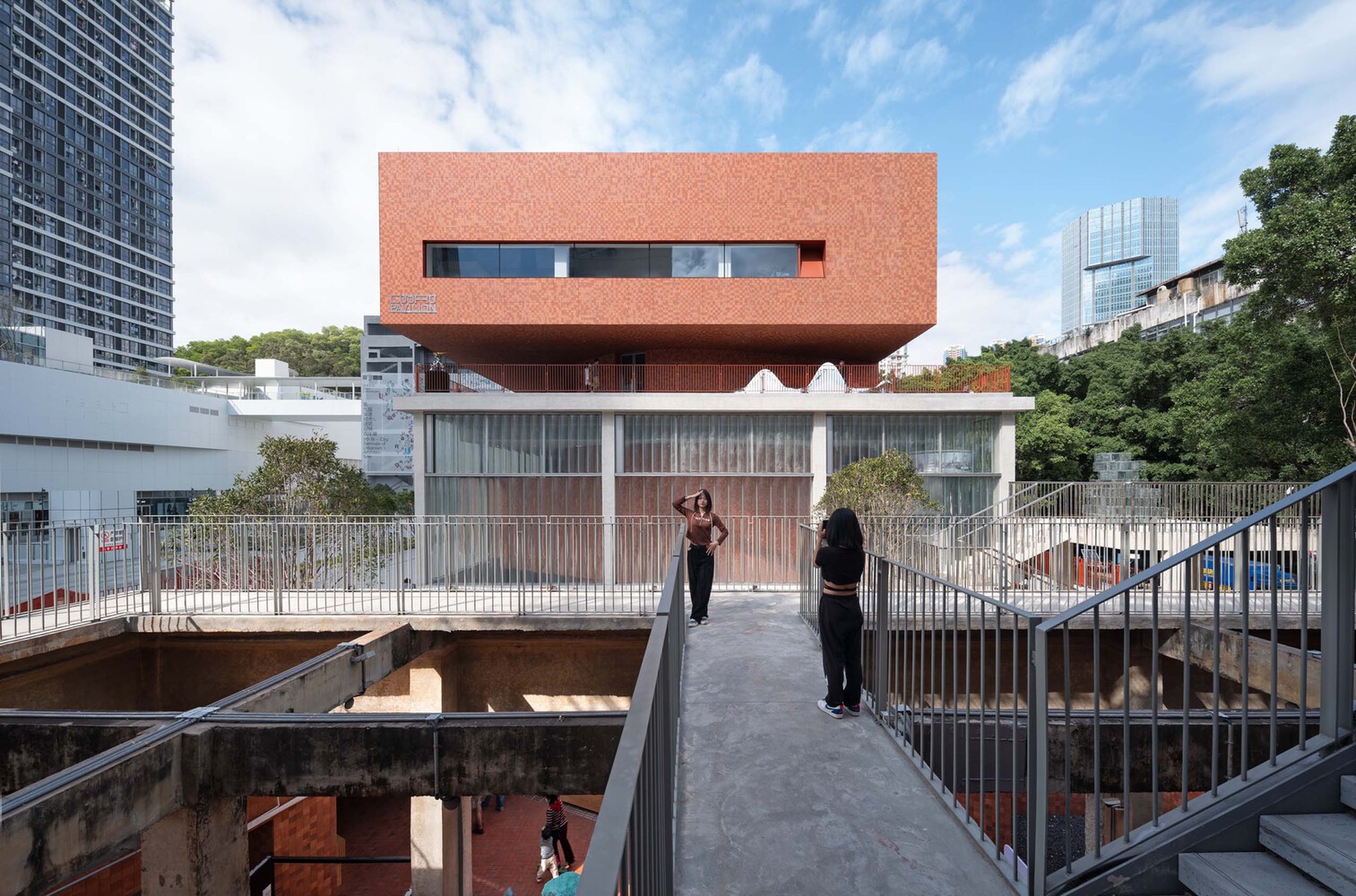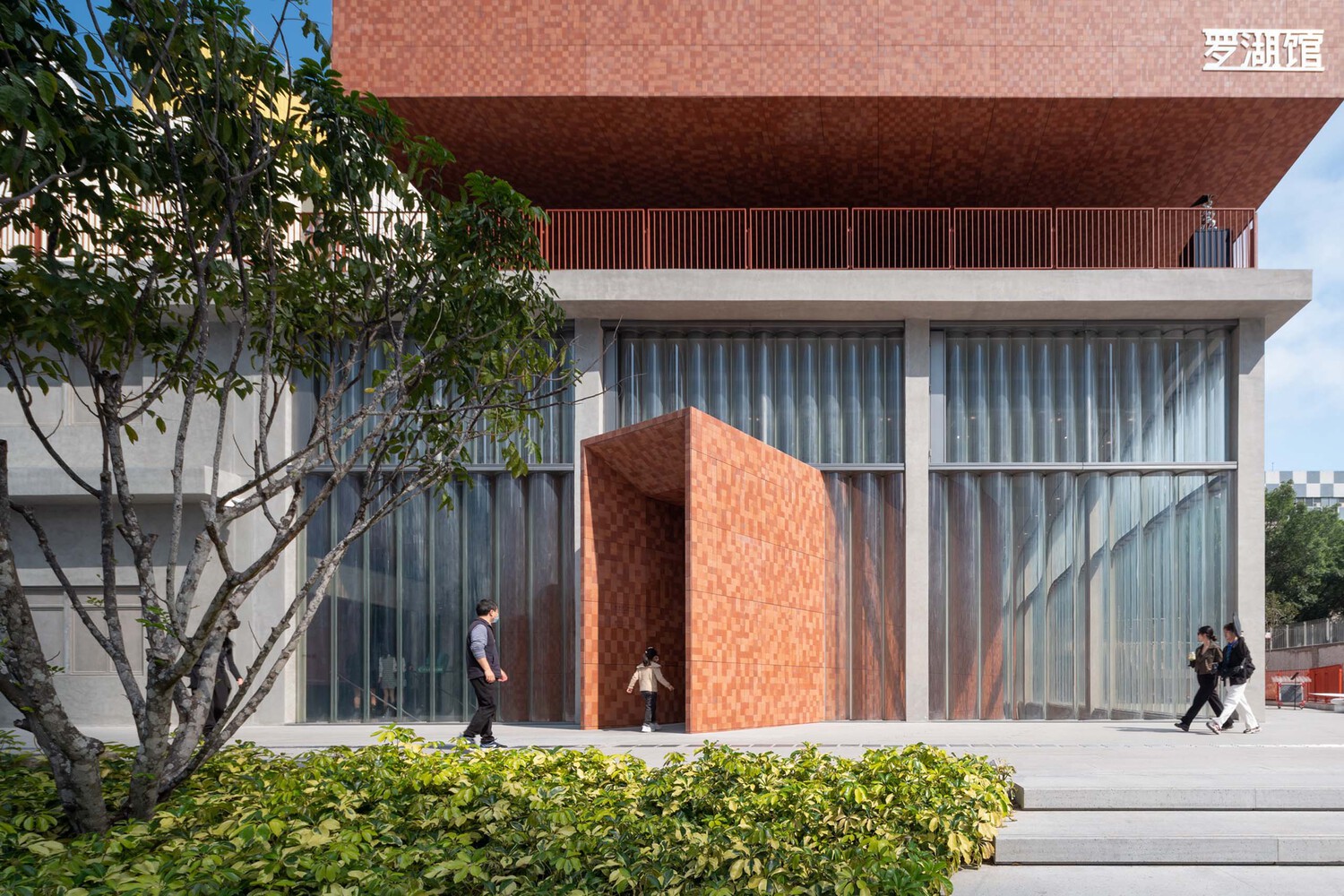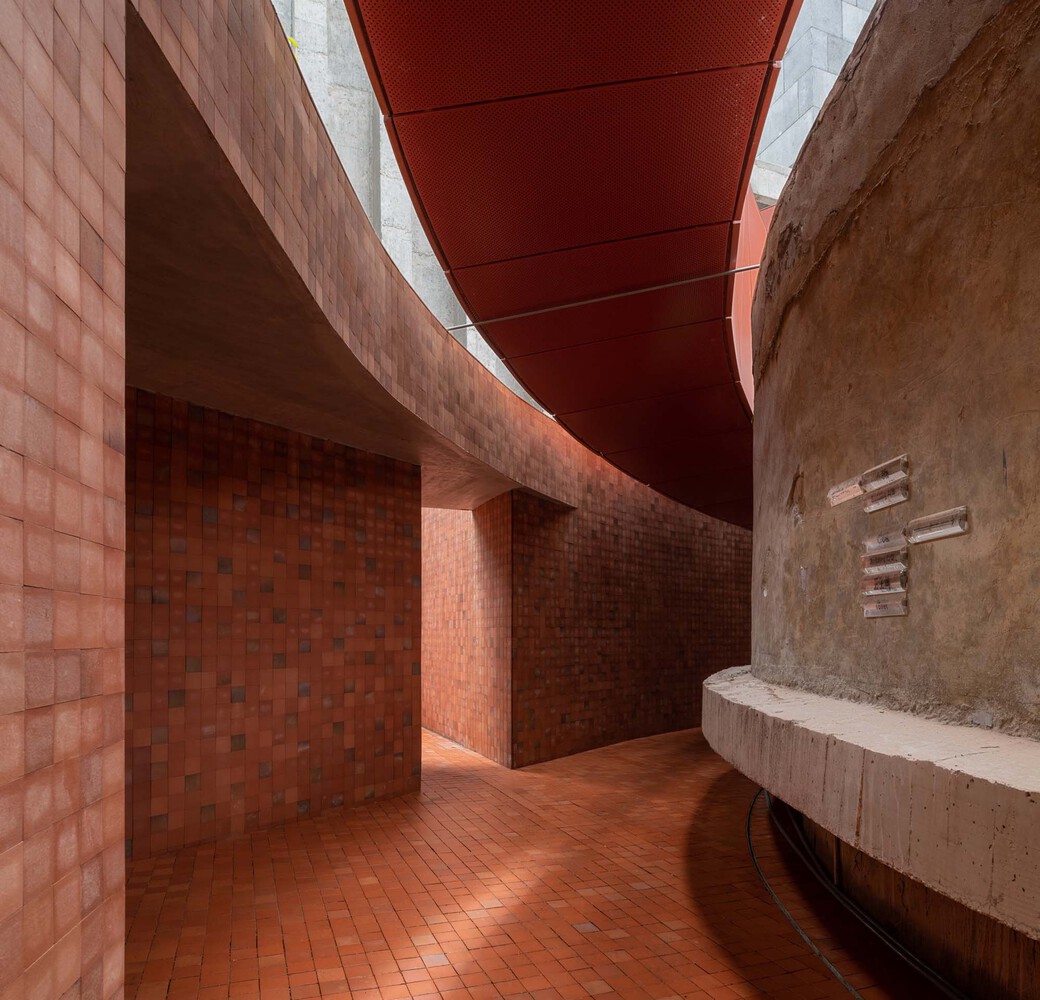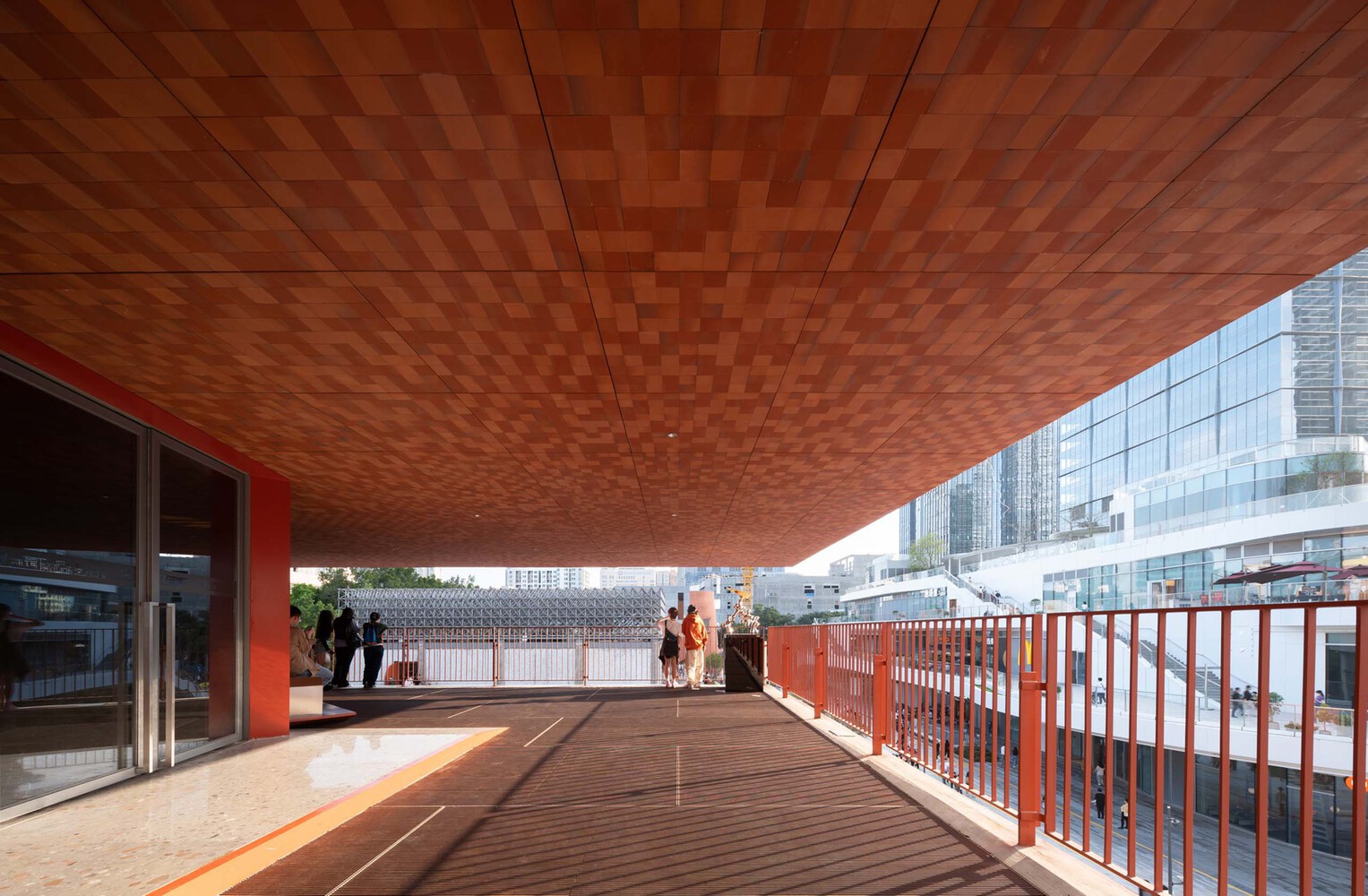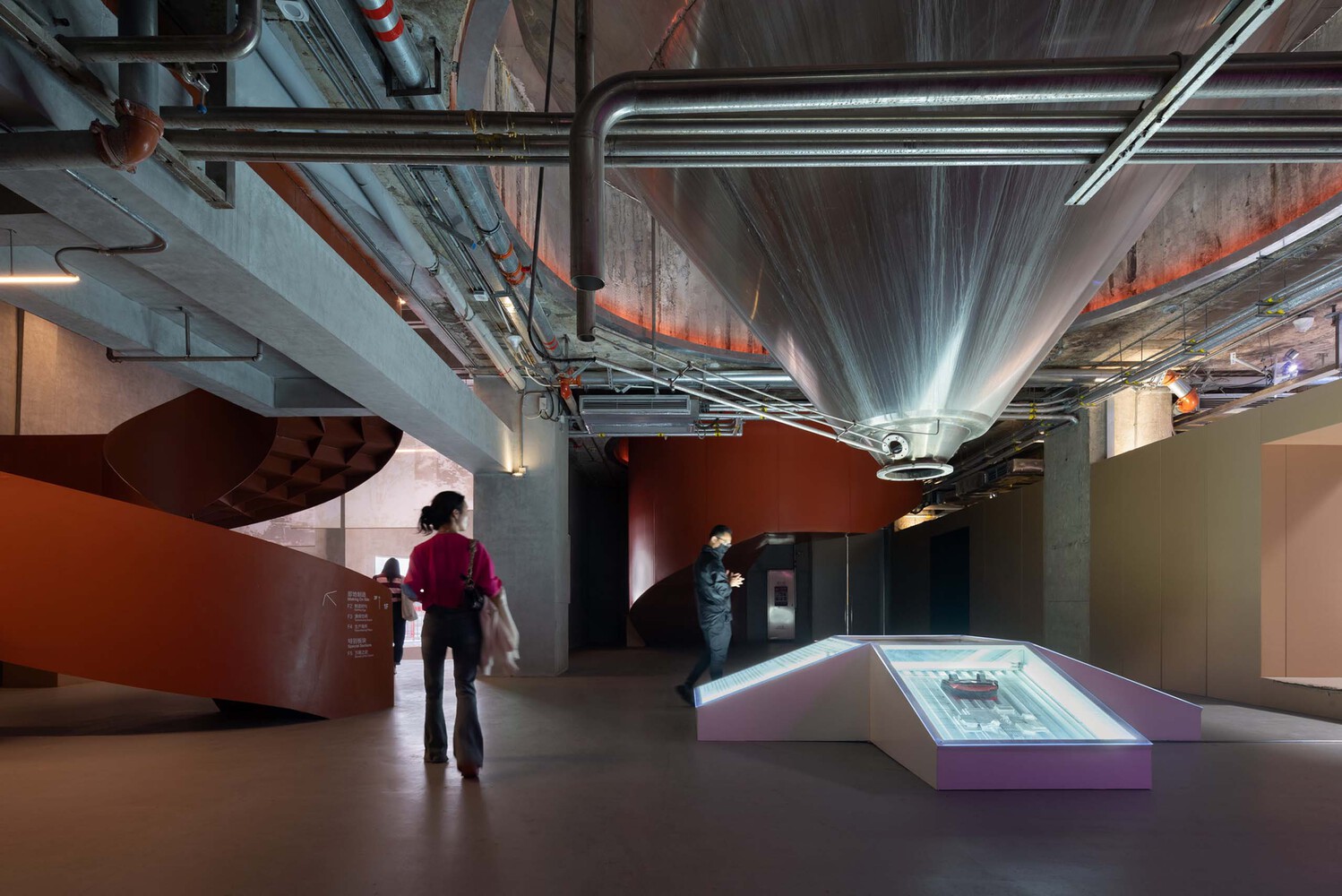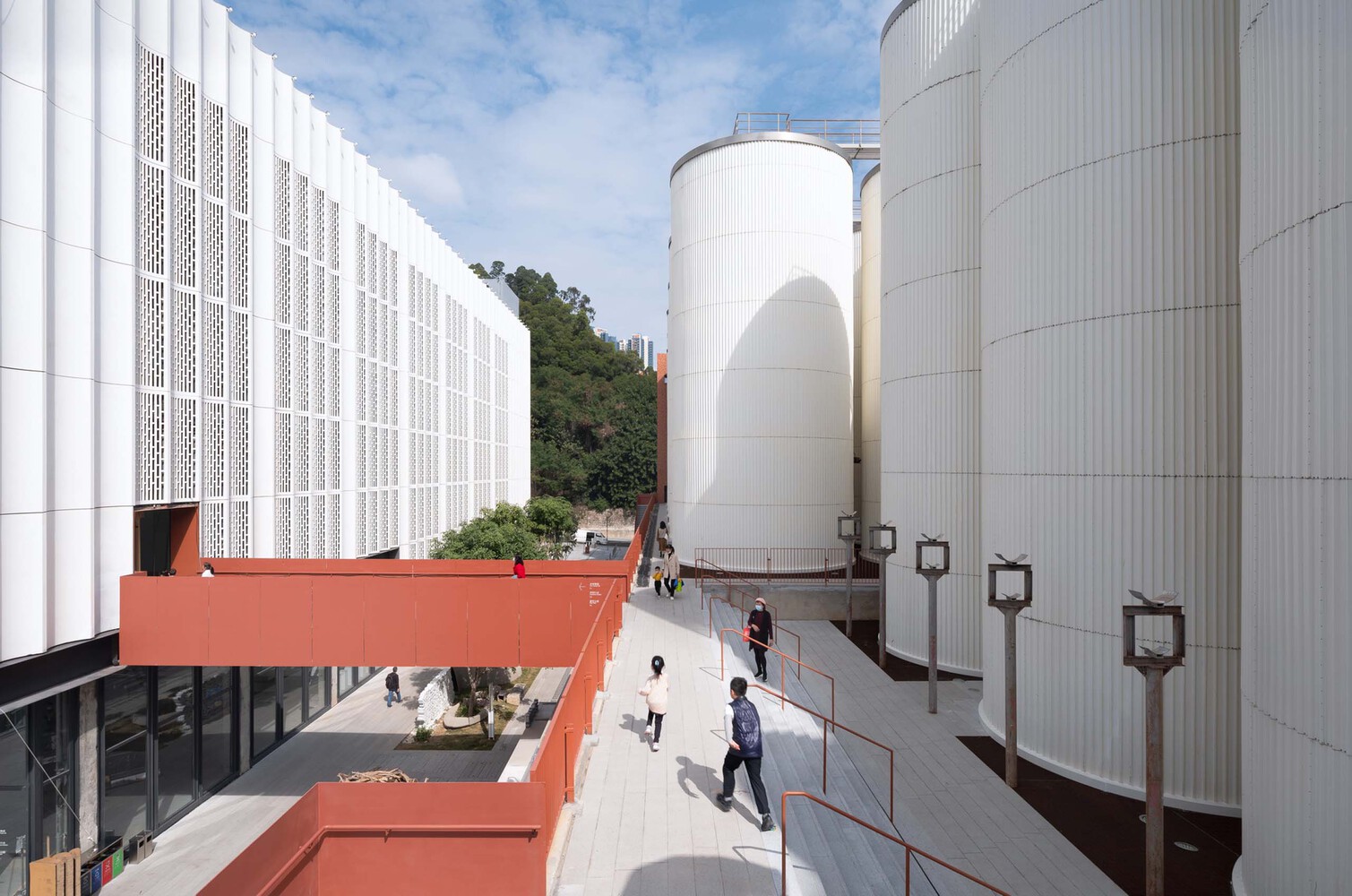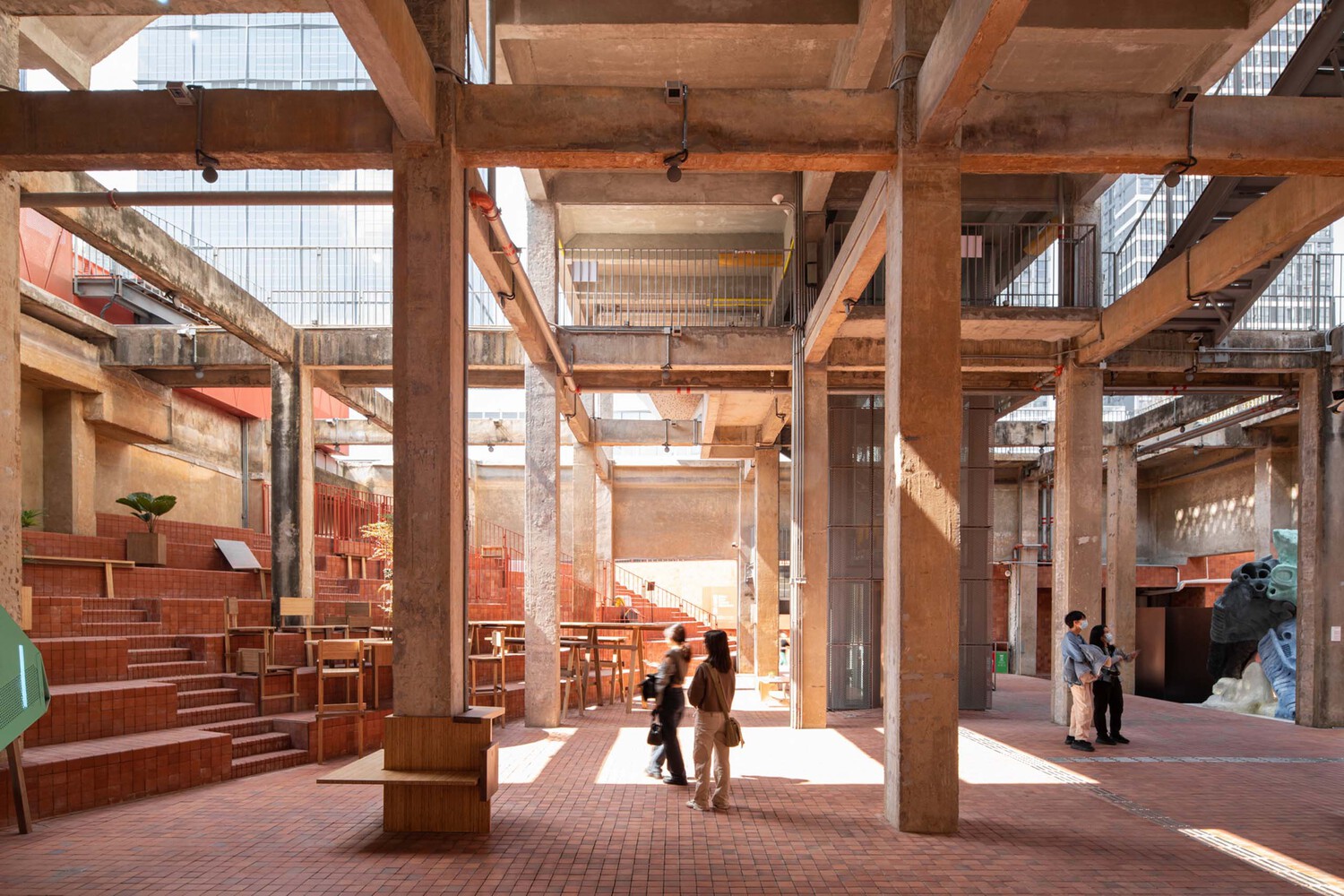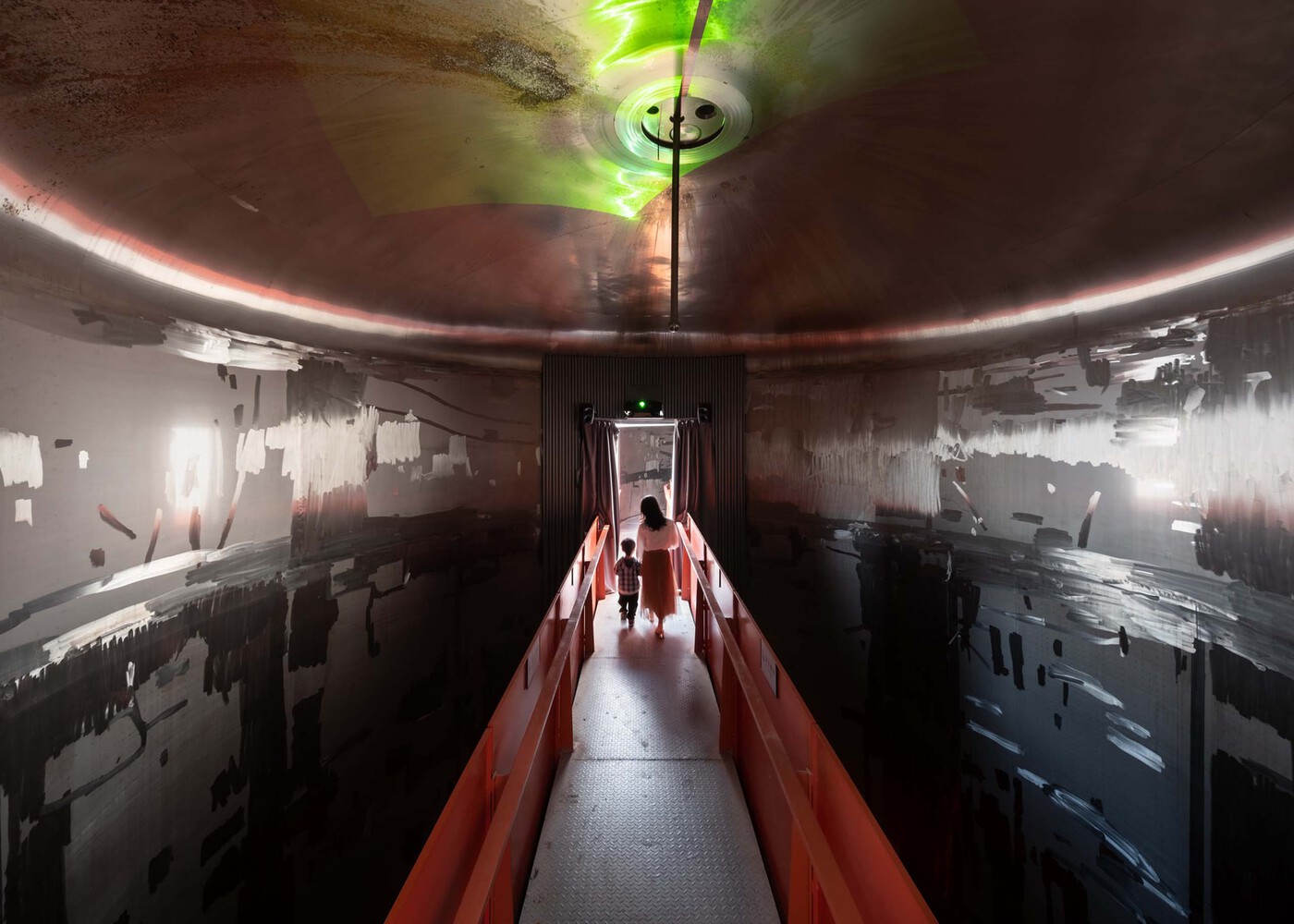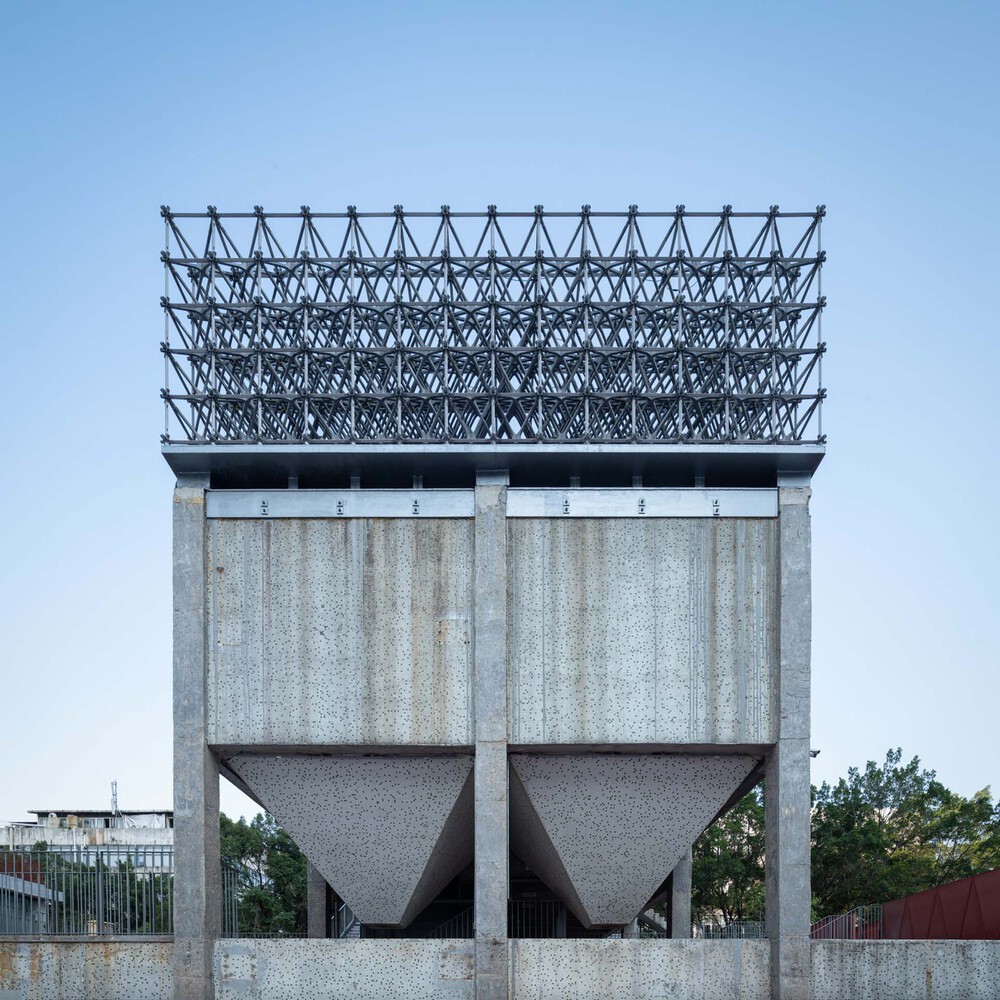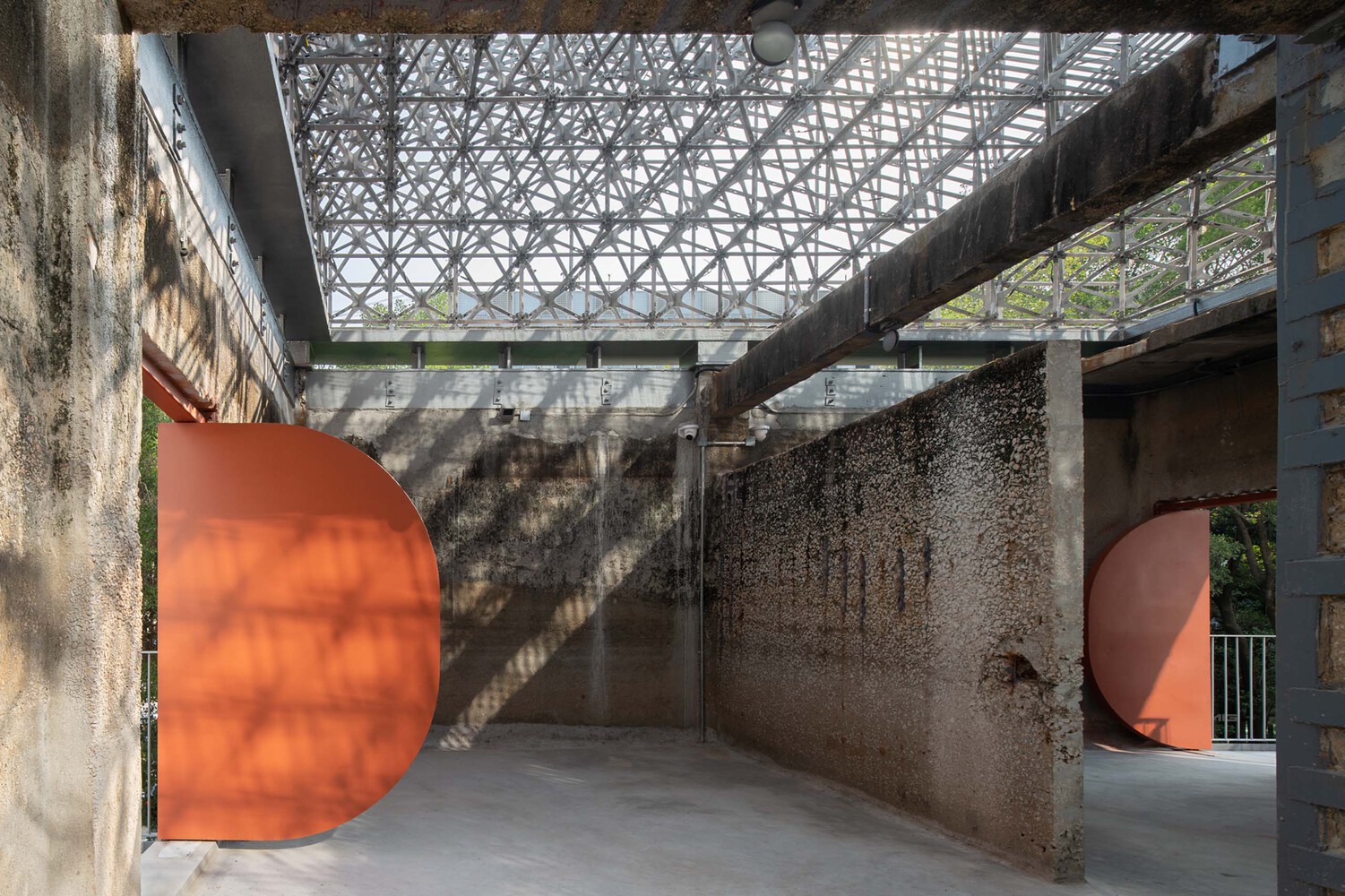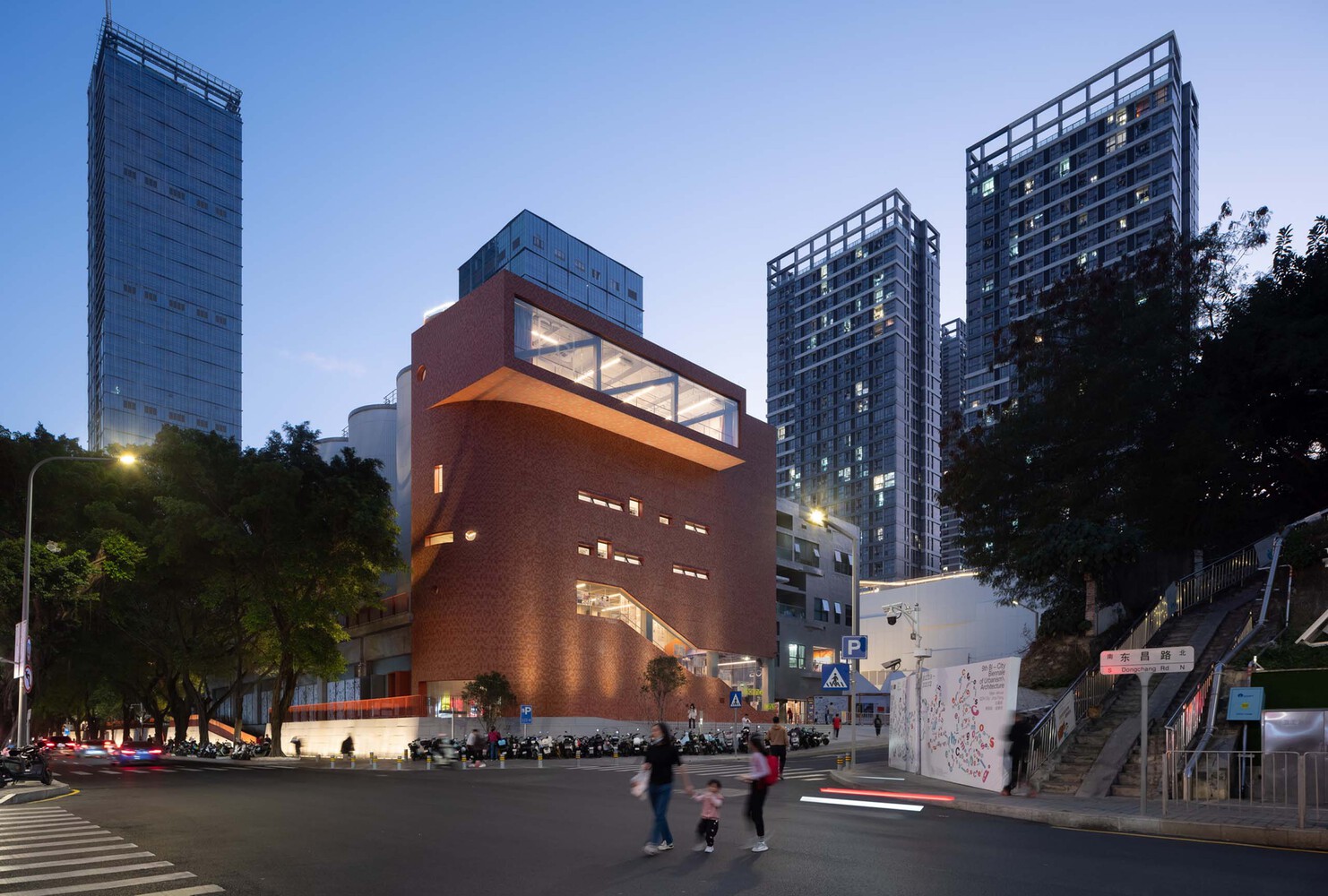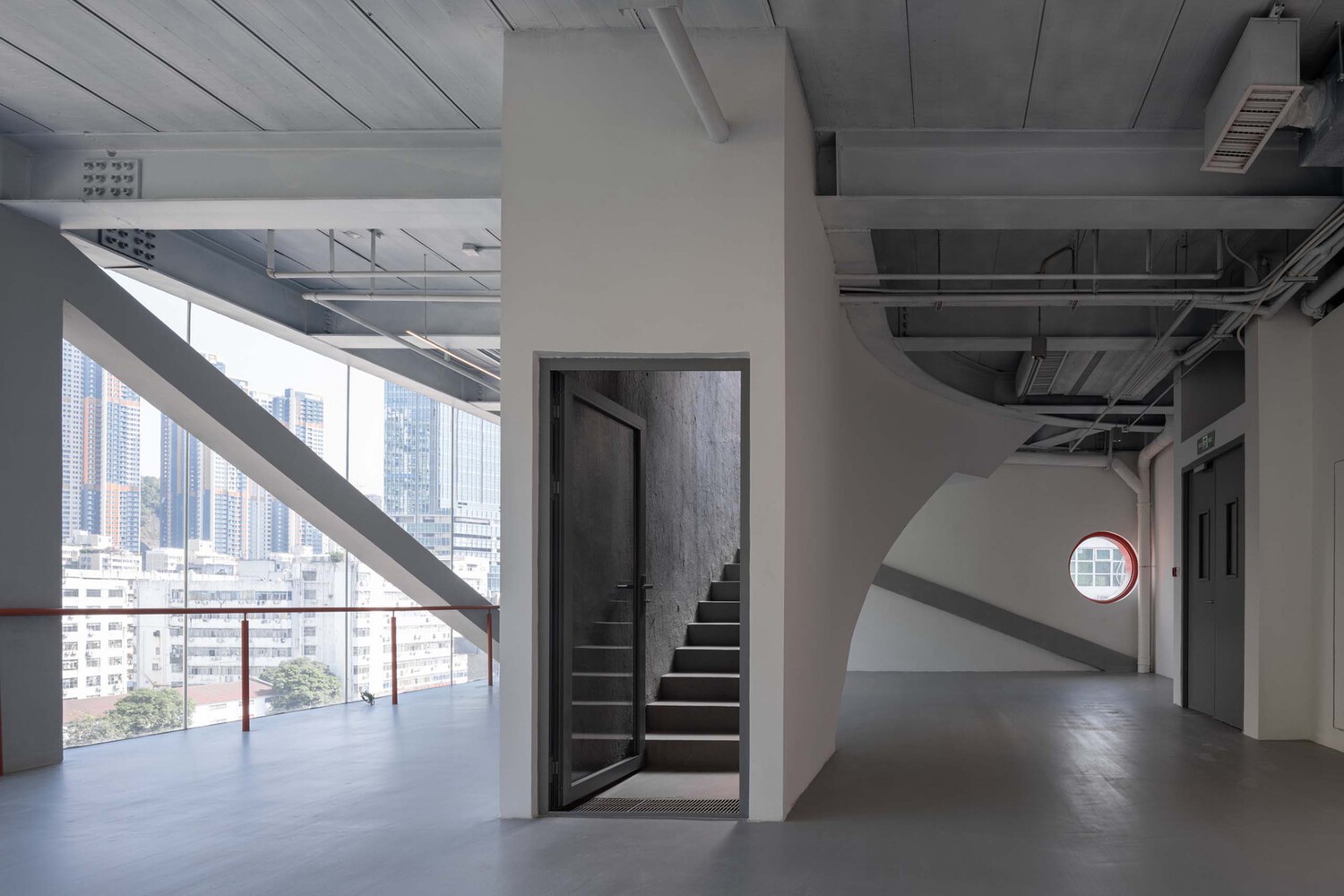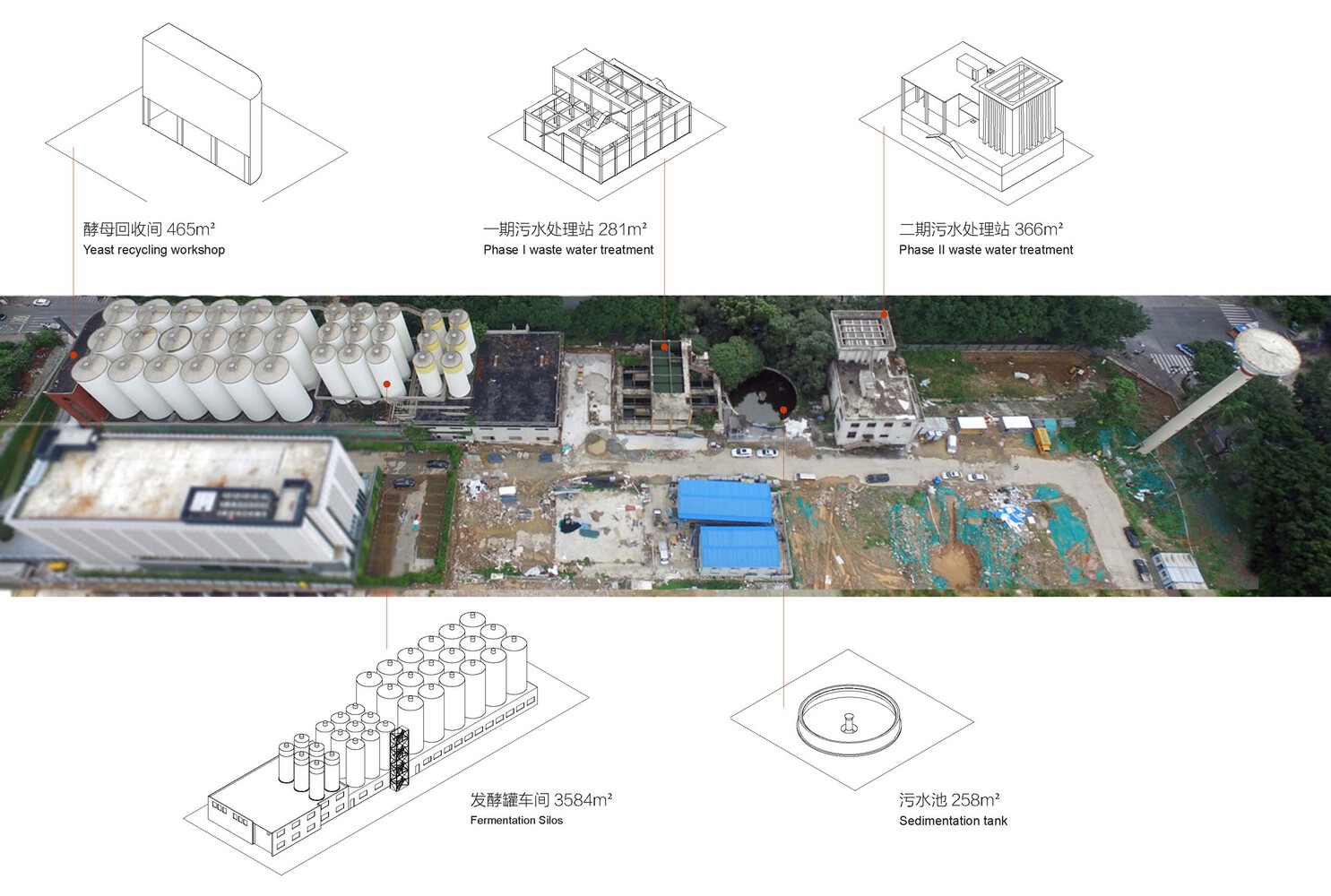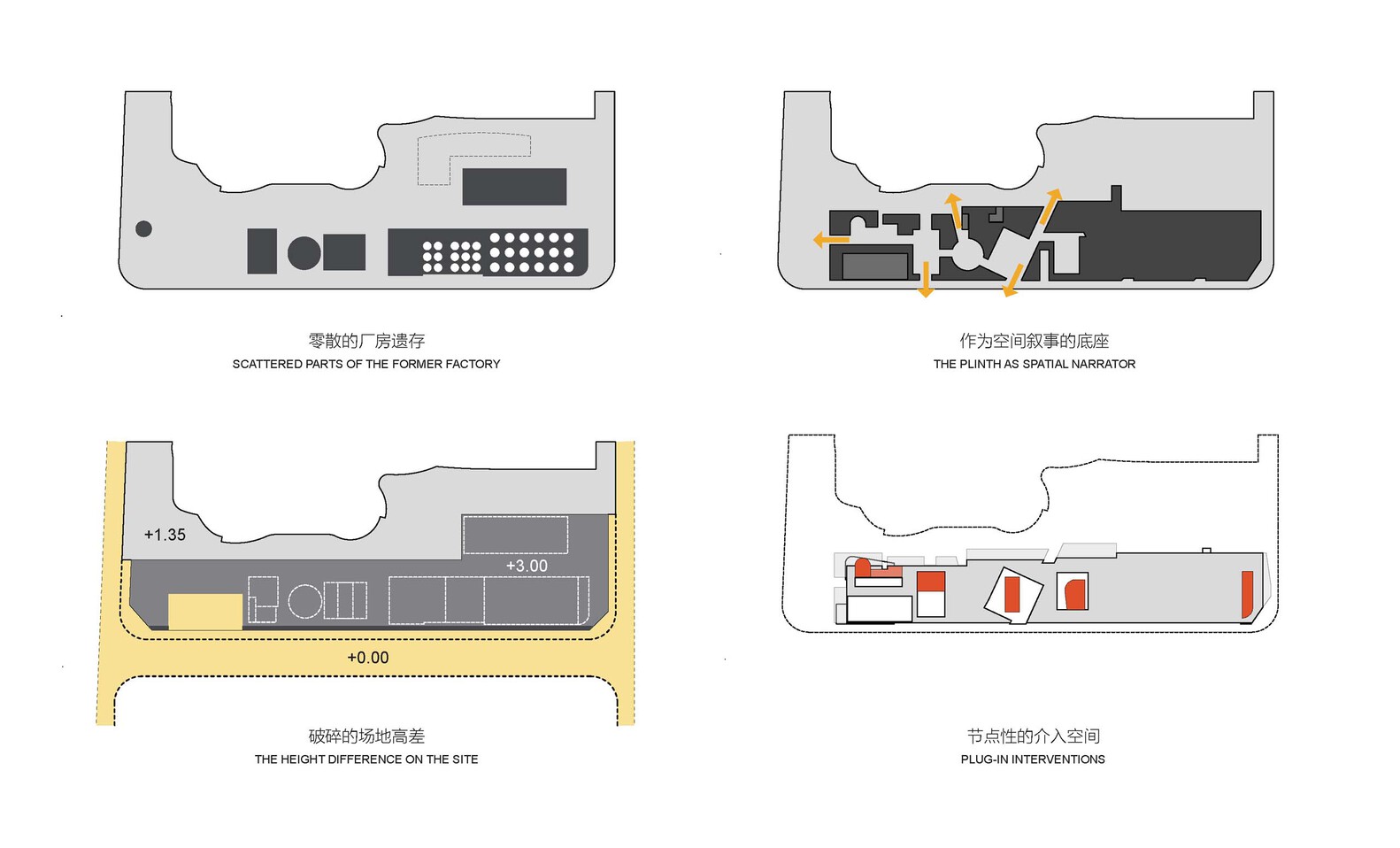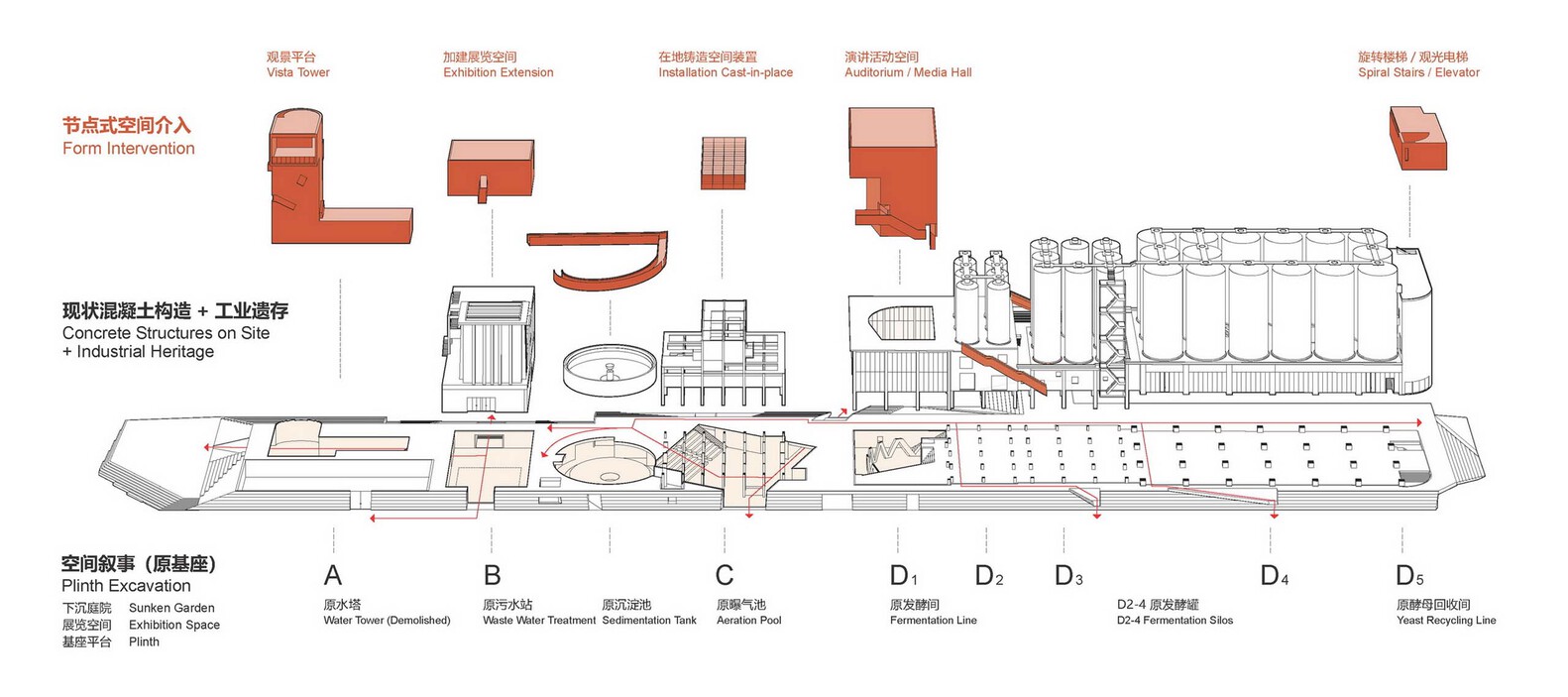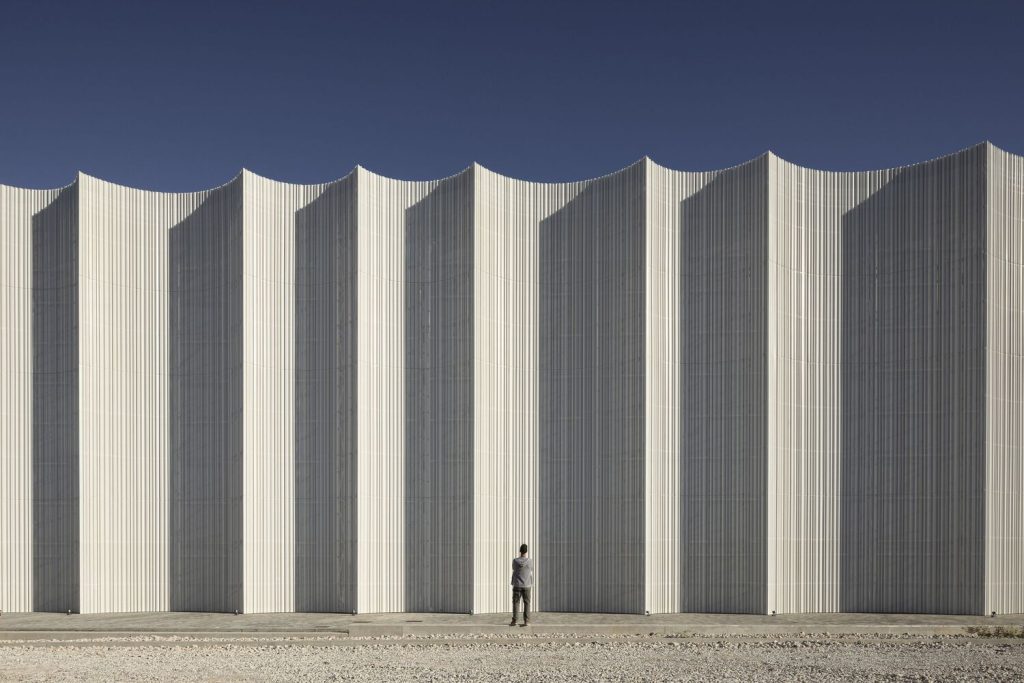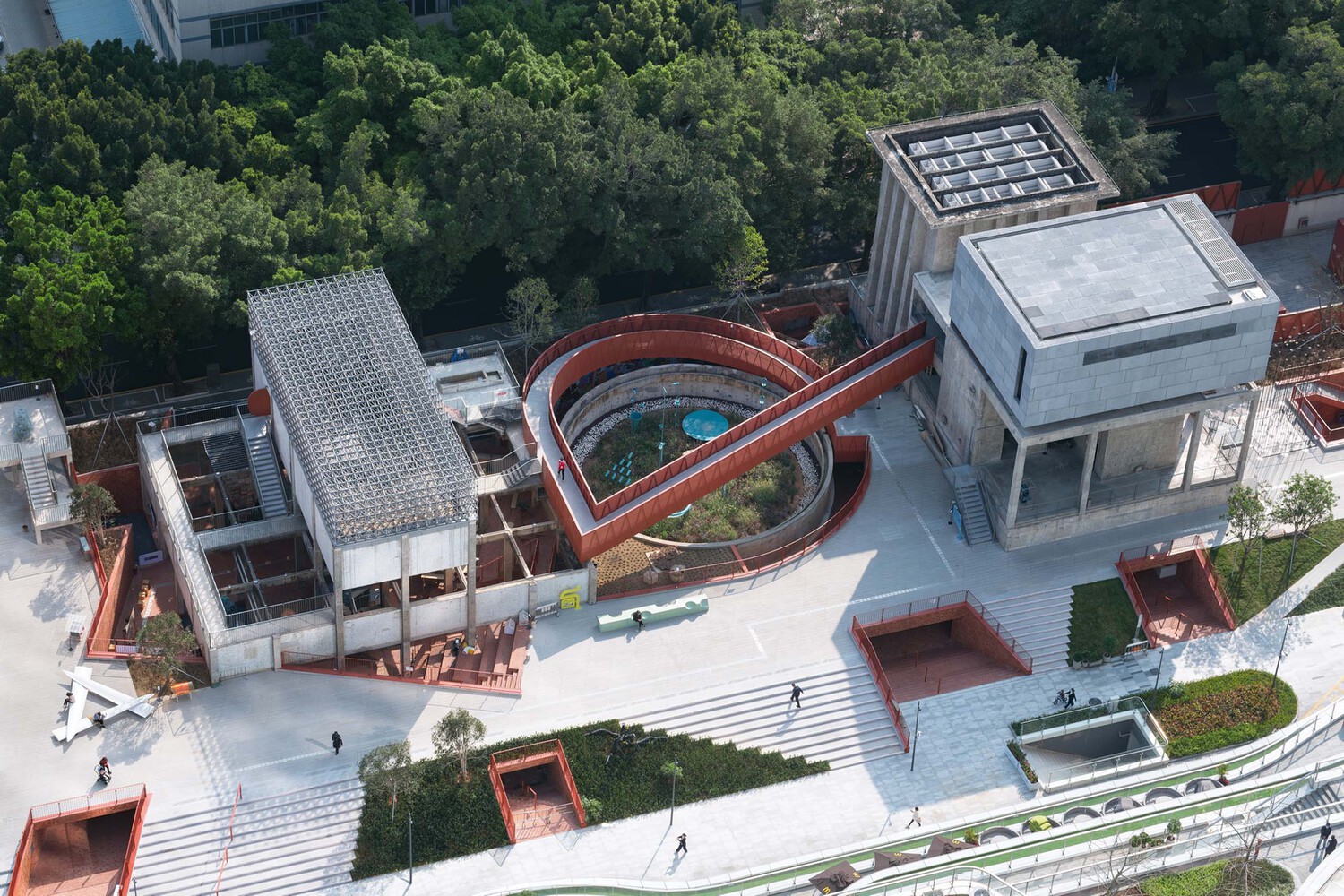
Kingway Brewery Renovation / URBANUS
The Kingway Brewery is located in Luohu, the downtown district of Shenzhen Special Economic Zone, renowned for its early development. Kingway Beer has been the collective memory of Shenzheners, especially among the pioneers and migrants from all over China to pursue their dreams in this frontier city of China’s reform and opening-up. As Shenzhen proceeds with its radical urban development and industrial upgrade, shifting from traditional manufacturing to a smart economy, a substantial part of Kingway Brewery’s standing structures was demolished, leaving a rectilinear site of about 11,600 square meters vectoring north to south, marking the city’s industrial heritage, urban development and memories of past endeavors, glories, and entrepreneurial pioneering spirit. Following the notion of “Space as Exhibition”, URBANUS started with the rediscovery and transformation of the spatial features of the site and renovated the remaining industrial structures and facilities with flexible and creative use of spatial interventions and integrations, leading to an out-of-the-ordinary spatial experience. It has effectively transformed Kingway Brewery into a public cultural platform of new urban life.
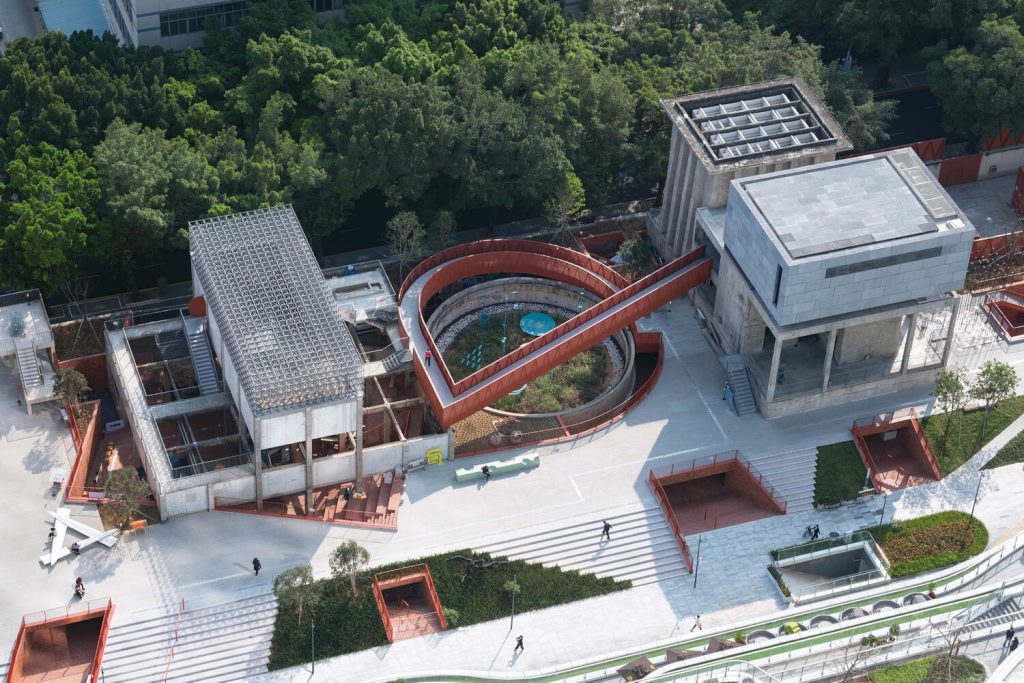
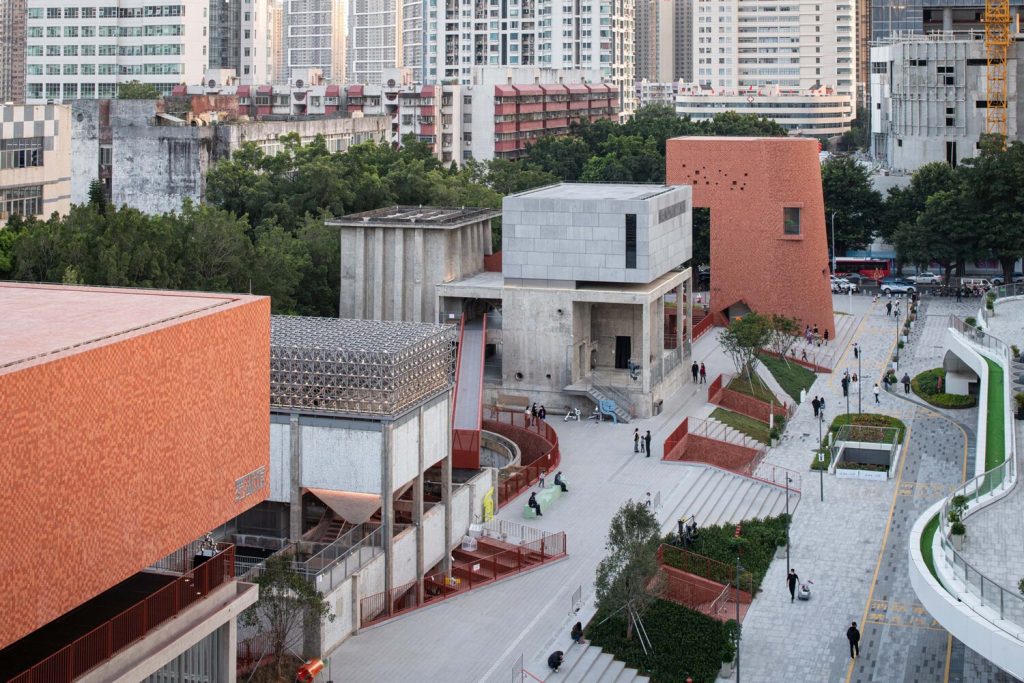
The industrial architecture of Kingway Brewery provides a unique spatial experience, yet its remaining structures are scattered and unable to form a coherent spatial sequence. URBANUS applies the renovation strategies of integrating, plugging in, and intervening in the existing structures. The plinth which measured 1.65 meters above the street on the westbound and 3 meters on the east is utilized as a base by scooping out volumes, coalescing the originally scattered volumes to achieve a balance with its large-scale urban surroundings. The plinth becomes a unified exhibition platform of industrial architecture, with exterior exhibition spaces, dotted theme gardens, and an interior of excavated courtyards, pass-ways, and recreation areas, creating a lineage of spatial narrative. The closed facade on the east side of the plinth has several entrances with various spatial orientations and characteristics. As result, a 266-meter-long street comes to life
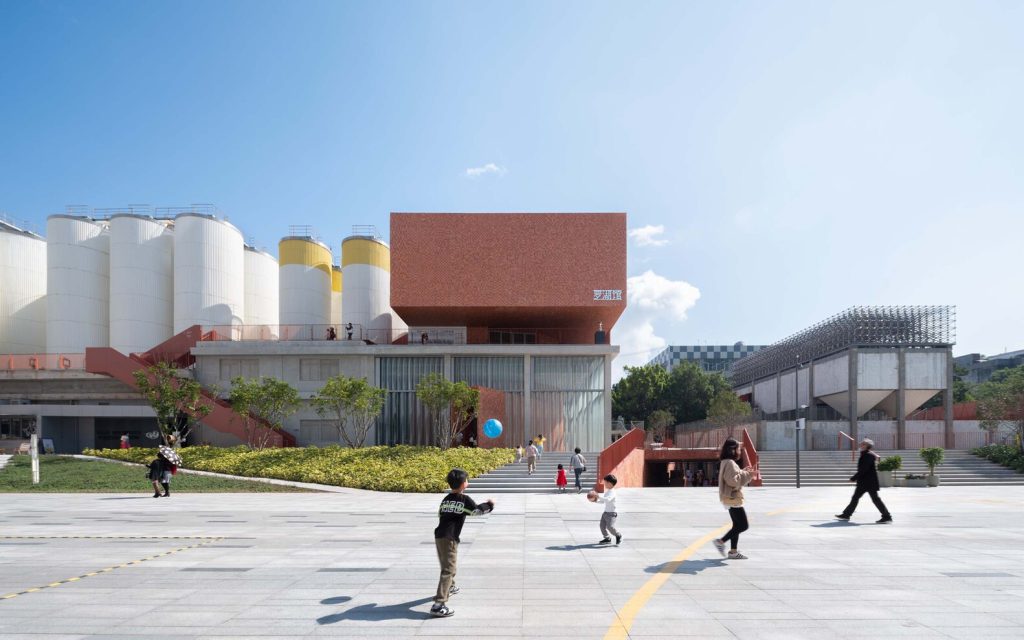
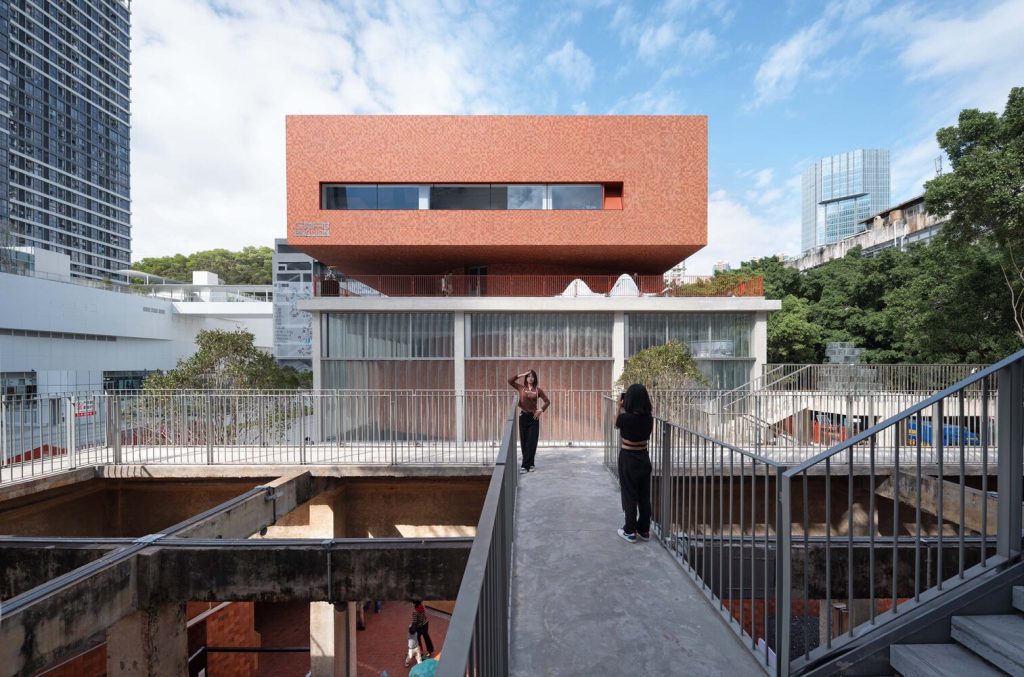
The narrative of the new Kingway Brewery begins with the city square on the south end, moving past buildings A, B, C, and D, and ends with another public square at the northern end. The observation tower, Building A, is a Mnemosyne landmark at the south entrance. It possesses an excellent vista from a distance and embodies the legacy of a demolished water tower on the southern square. The renovation also uncaps the sealed space of the wastewater pool of Building B and the aeration tank of Building C, peeling off the spotted tiles on the blunt concrete, and exposing the perpetual sphere of the industrial relic. The floor and stairs are covered with handcrafted flame-colored bricks. A 300-square-meter metal exhibition hall was constructed on top of Building B. The porous texture of foamed aluminum adds a harmonious finishing touch to the dominance of concrete.
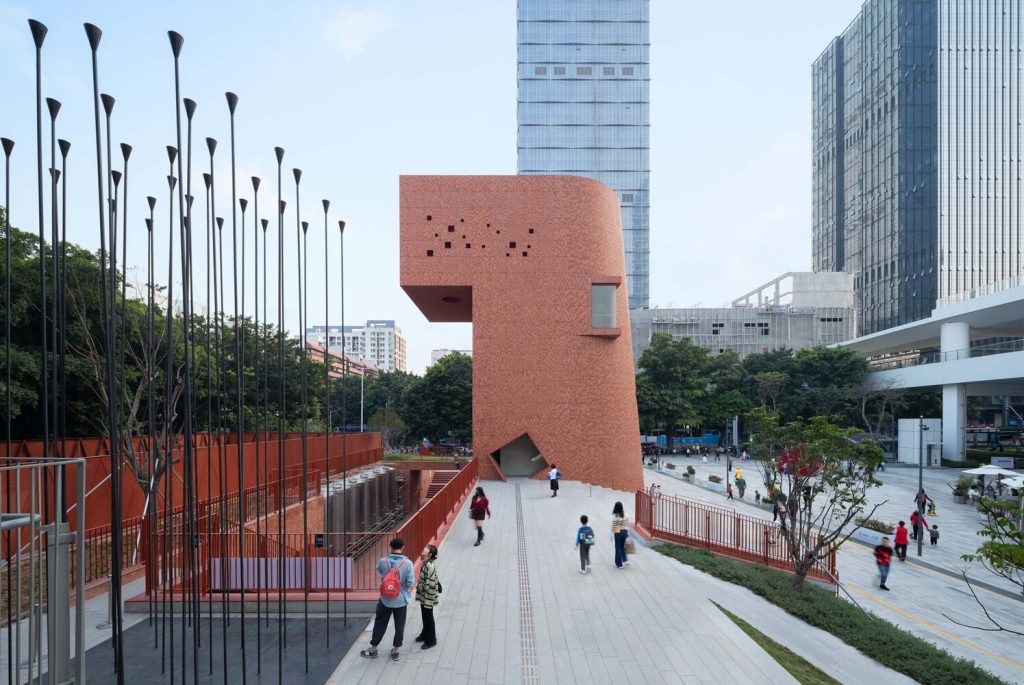
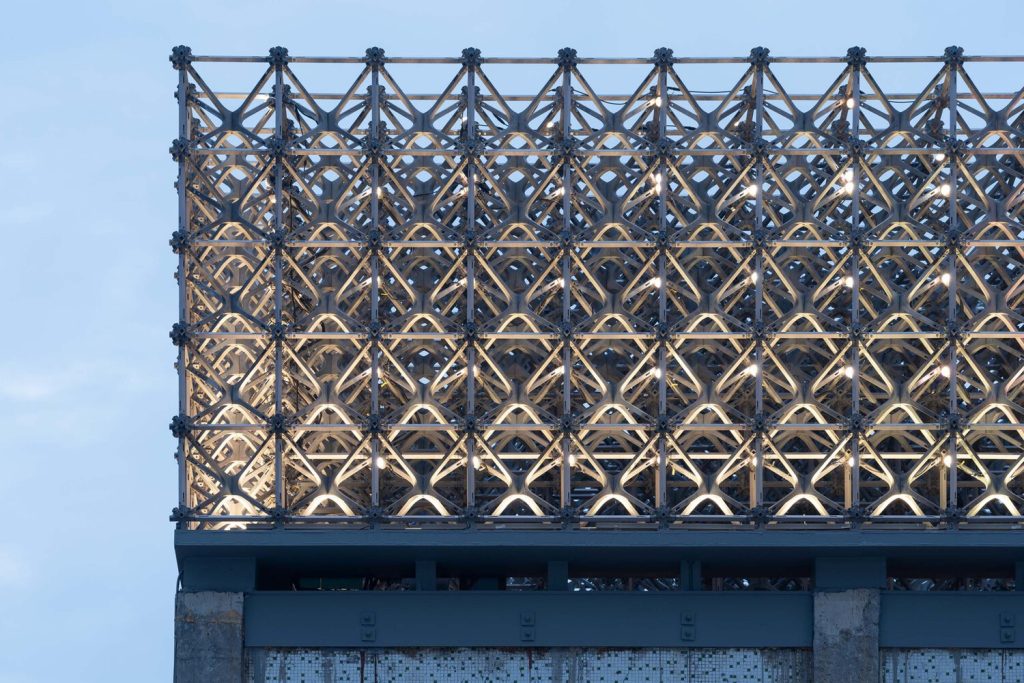
On the top of the aeration tank of Building C, the casted aluminum structure with the shimmering lighting is reminiscent of the rising golden bubbles of a beer. The excavation of a sedimentation tank between Building B and C exposed its 18-meter-diameter concrete shell, which has been transformed into a scenic garden with both ground and aerial walkways that allow visitors to take a stroll in the garden, peek through the heavy holes drilled into the concrete walls, discover the secret withheld by the garden and experience the spatial magic of an industrial relic.
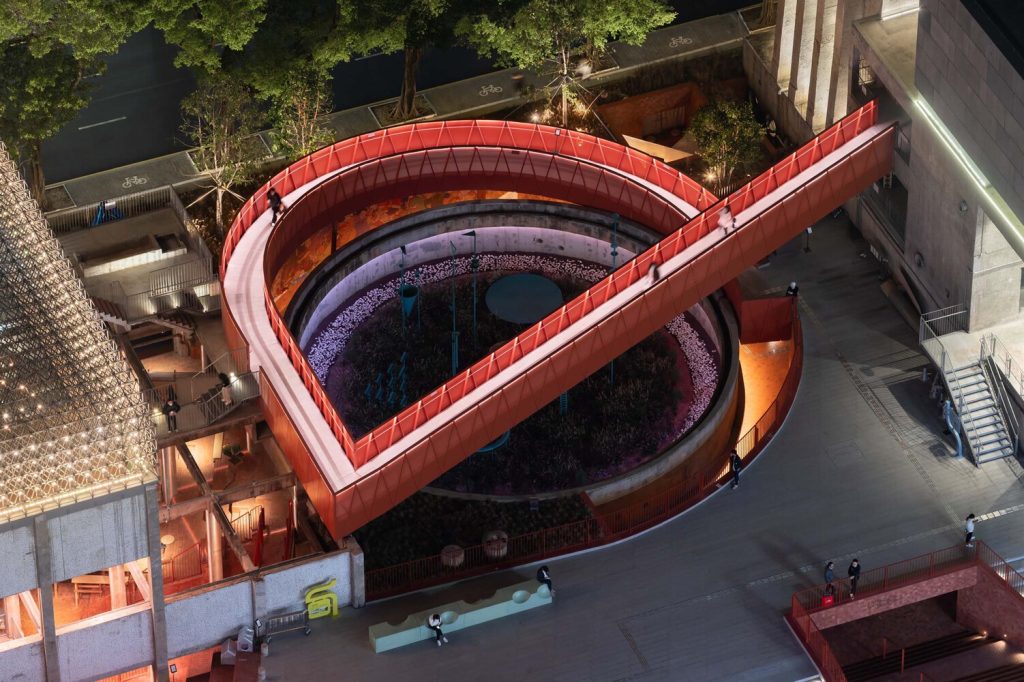
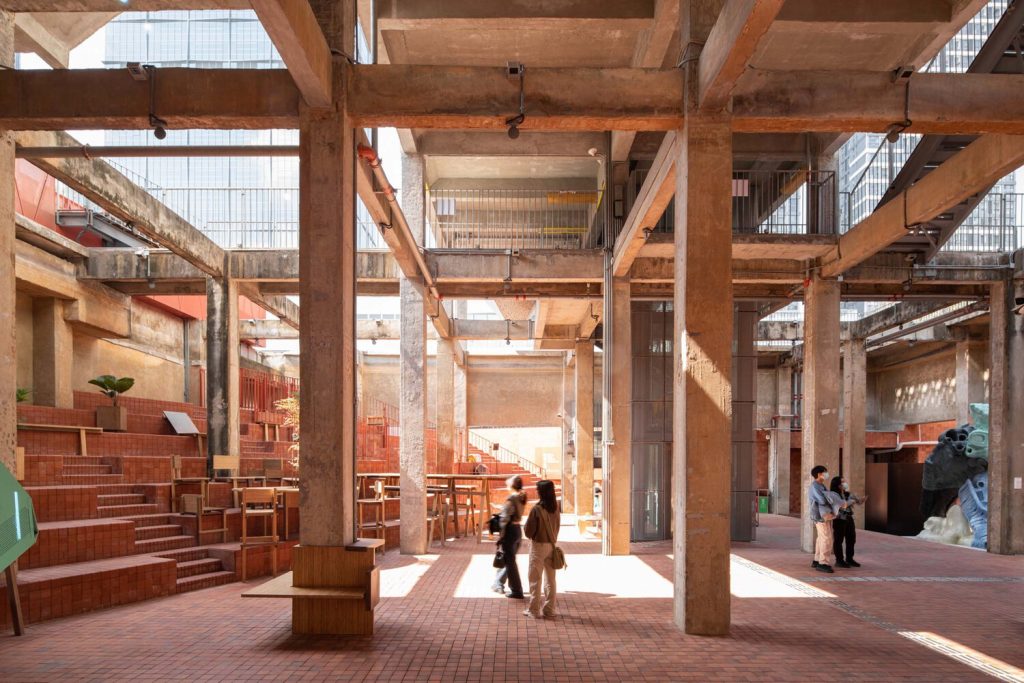
Building D is the most symbolic industrial structure on site, with 33 white stainless steel fermentation tanks on the roof, protruding into the building like inversed cones hanging from the ceiling. Below are densely organized pike networks. With the renovation, D1 is transformed into a multi-functional auditorium. A two-story exhibition hall is added to the roof. Part of the tanks and pipelines is preserved in D2/D3 and the former production site is turned into a hustling bar. On the roof of Building D4, three tanks in the middle, each with a diameter of 7.5 meters, were removed to make space for an open-air theater surrounded by the high silos; natural light is let into the lower floor from above, making the space suitable for exhibitions and performances. Tiles and suspended ceilings were removed, and the inverted conical tanks with the unveiled concrete structures on the interior restore the industrial atmosphere. An aerial walkway is also built to connect all the remaining tanks. One of the removed tanks is laid down to become a portal to the cultivated memory on the rooftop of Building E.
Building D5 was once a four-story yeast recycling line. The first-floor ceiling is partially cut off to allow a large stairway connecting the first and second floors, which serve as both display and resting areas. A steel structured box covered with red tiles is added to the roof of D5, which echoes with Building A in the south. Its floor-to-ceiling glass windows open to scenes of the mountain park and the city in the north. On December 10, 2022, the 9th Shenzhen-Hong Biennale (UABB) was held in the newly renovated Kingway Brewery, instantly making it ”the first and foremost” project of the biennale. Today, the urban center of Shenzhen is shifting westward, and Luohu District, once known for its service industry, is aspiring for a new prospect of growth and development. We hope that the renovation project will preserve the memory and legacy of the city and transform the traditional industrial complex into new living landmarks for converging culture and art.
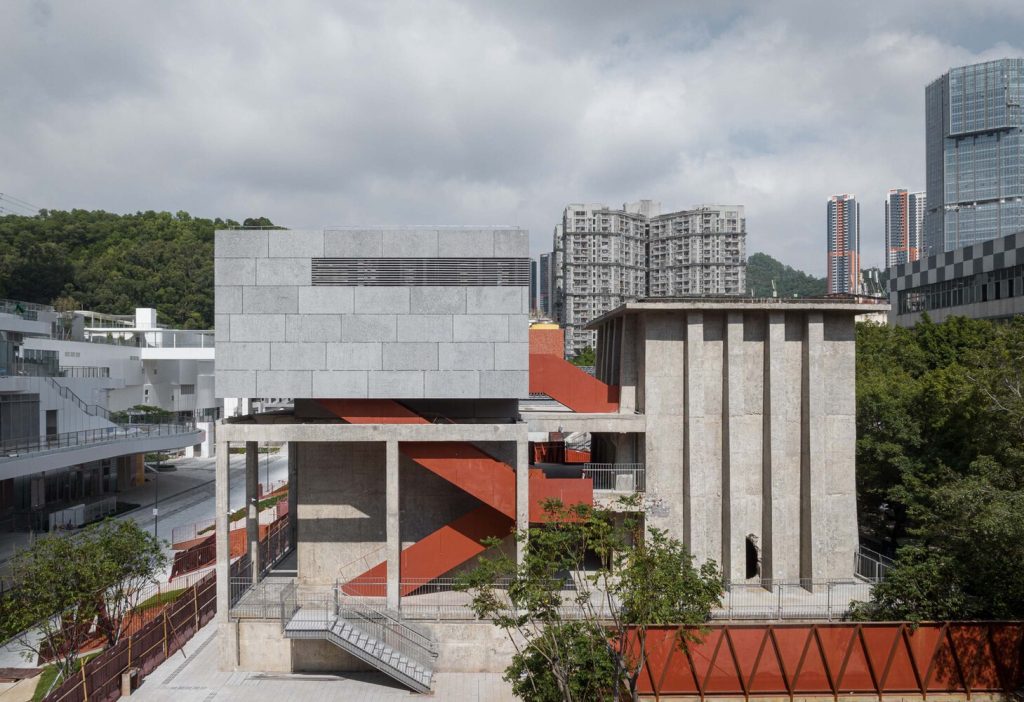
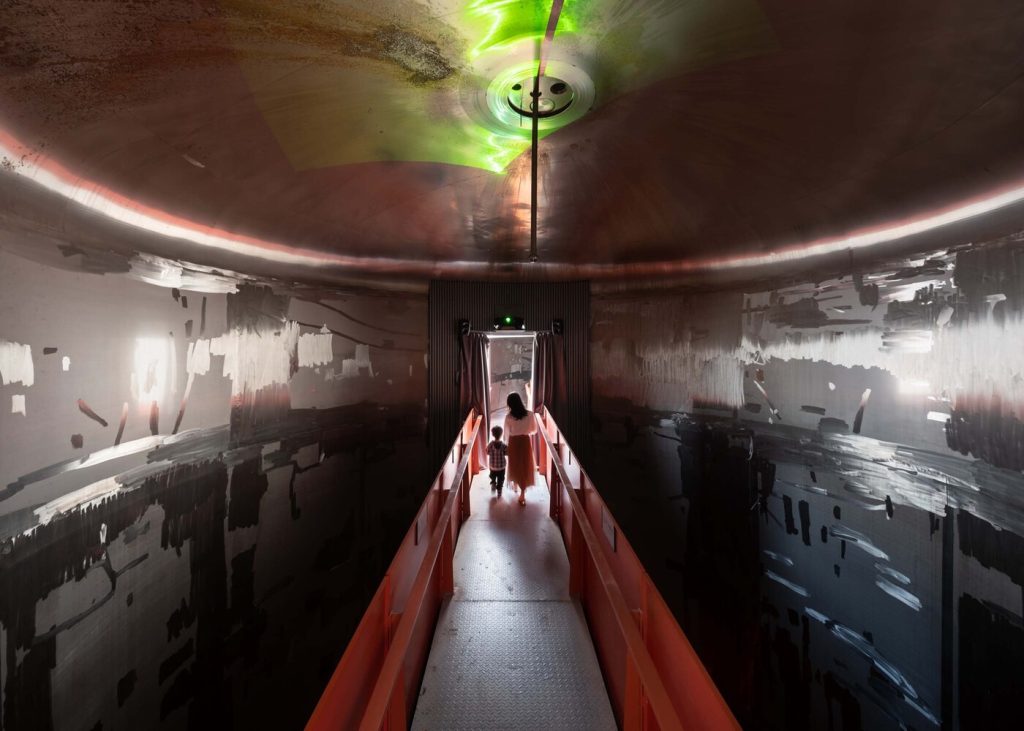
- Academic Consultant: Meng Yan
- Curator: Wendy Ran Wu
- Curation Team: Neill Mclean Gaddes (SANS), Siying Wu, Yuxin Liu
- Visual Design: noynoy
- Remaking Factory: The Design archive of the Kingway Brewery’s regeneration
- Project Manager: Haijun Zhang
- Curation and Exhibition Design: Ruizhe Yuan, Wenhan Dong, Qinxue Wang | Yuxin Peng(Technical Support)
- MOS Methodology Exhibition Research & Design Team: Wendy Wu, Siying Wu, Ruixin Yang, Neill Mclean Gaddes (SANS)
- Cast-aluminum Installation Design Team: Ting Wen, Haijun Zhang, Pengcheng Sun, Ruizhe Yuan, Ruoning Ni, Kan Lin, Qingyue Gao
- “Space/Time Agency” Exhibition
- “Cosmic Cities” of “ Cosmologic Dialogue” Section
- Exhibitor: Meng Yan × Li Rui
- Curation and Exhibition Design: Rui Li | Xiao Ding, Wenhan Dong | Chuwei Meng (Individual artist)
